If you’re looking for a fantastic road trip idea but don’t want to go too far, I’ve got a really interesting suggestion for you. A trip across our western border, to Saxony, specifically through Upper Lusatia.
If you’ve heard of Muskau Park, Goerlitz, and Bautzen, then you have a rough idea of what to expect. And if not, you’ll see why it’s worth going there, although these are not the only attractions in the travel plan I hope you’ll make use of. 😊 I’ll show you a few lesser-known places in the area: there will be a bit of culture, nature, and history.
Welcome to the tour!
Table of Contents
Muskau Park
The first item on the agenda is a tour of Muskau Park, listed as a UNESCO World Heritage Site. This park covers 728 hectares, so there’s really a lot to admire. You can explore it by bike (mostly), but personally, I recommend touring the park with a guide to better understand its history and the plant species found within.
What’s worth knowing? First of all, that Muskau Park now stretches across the territory of two countries and is divided into three zones. The nearest, around the castle, is precisely laid out and shows the hand of man. The farther part gives the impression of being less planned, and the farthest seems even neglected, especially when we visit Muskau Park in the middle of summer: the grass is long, everything seems to live its own life. This last part is located in Poland – it’s not our neglect, but rather the original intention of the park for these three zones to look like this.
In the park, we’ll find truly remarkable plant specimens. I was surprised by the “handkerchief tree,” or Davidia involucrata. The flowers look like hanging handkerchiefs! Besides that, it’s worth seeing the breathing roots of the bald cypress. Something amazing!
In the park, we can admire two castles. The New Castle was built in the 16th century in the Renaissance style. It’s currently burgundy; in the past, it was yellow, so personally, I hope they don’t change its color during renovation.
The place is associated with an extremely eccentric figure: he married for money (and divorced for money), had a romance with his stepdaughter, liked gambling, loved ice cream, adored nature, and today everyone adores him. Hermann Fürst von Pückler-Muskau, the man himself, created this masterpiece on both banks of the Neisse.
Accommodation: For two nights, we stayed in a hotel right by the park in Bad Muskau. Tasty breakfasts, spacious rooms, tranquility + on-site parking. Leaving the link: Kulturhotel Fürst Pückler Park
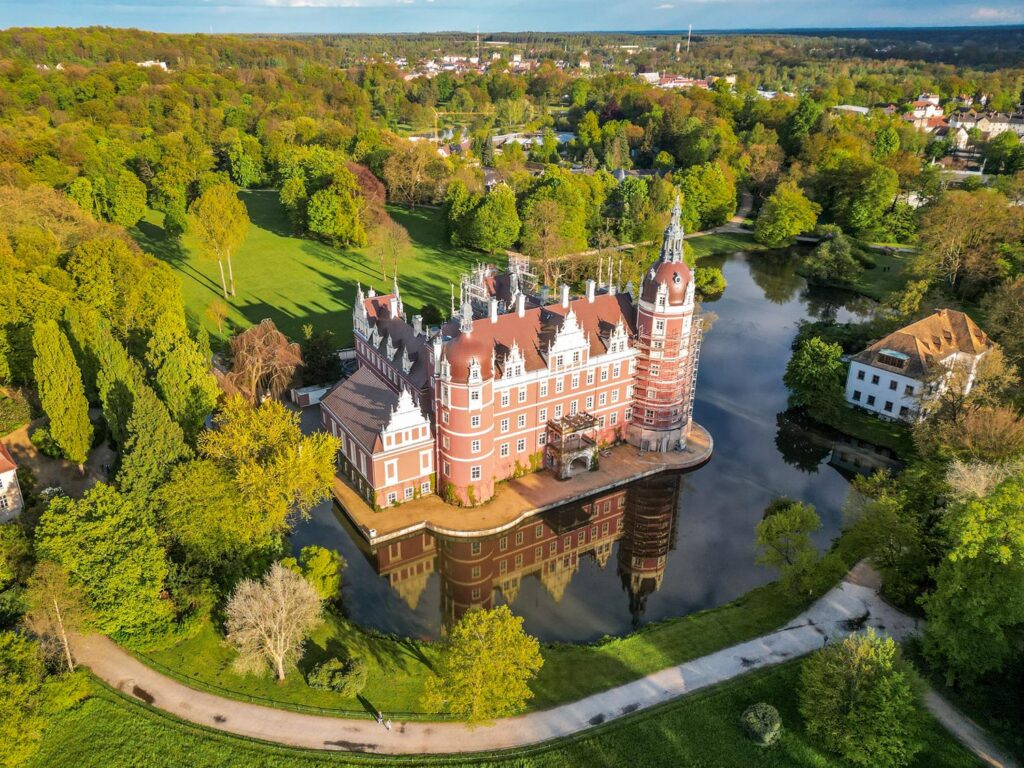
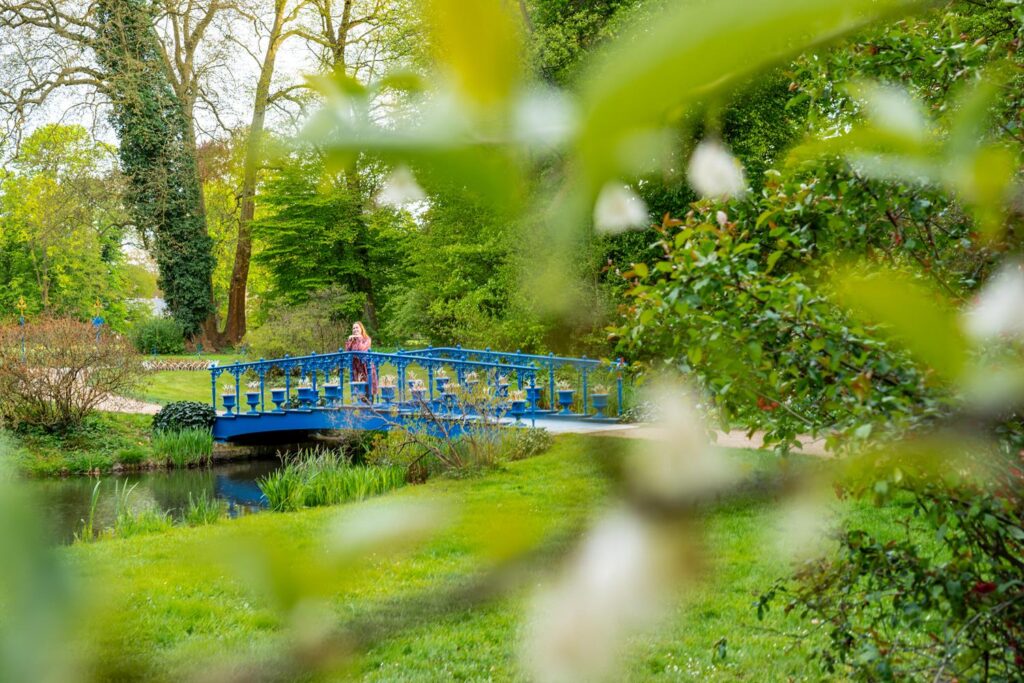
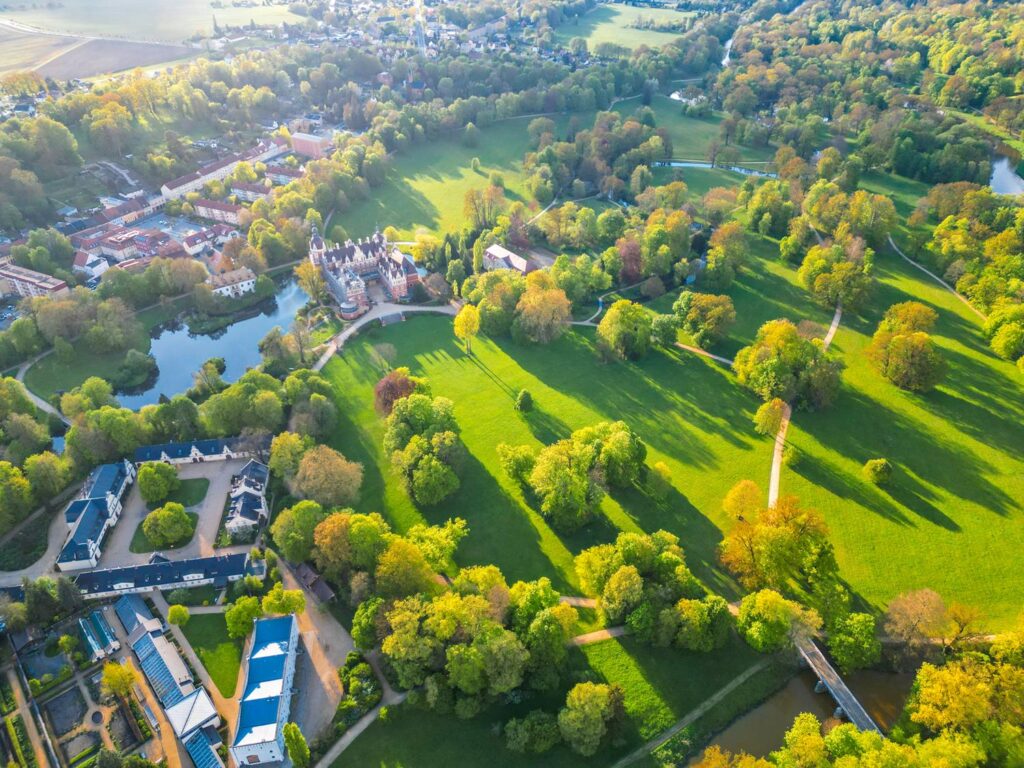
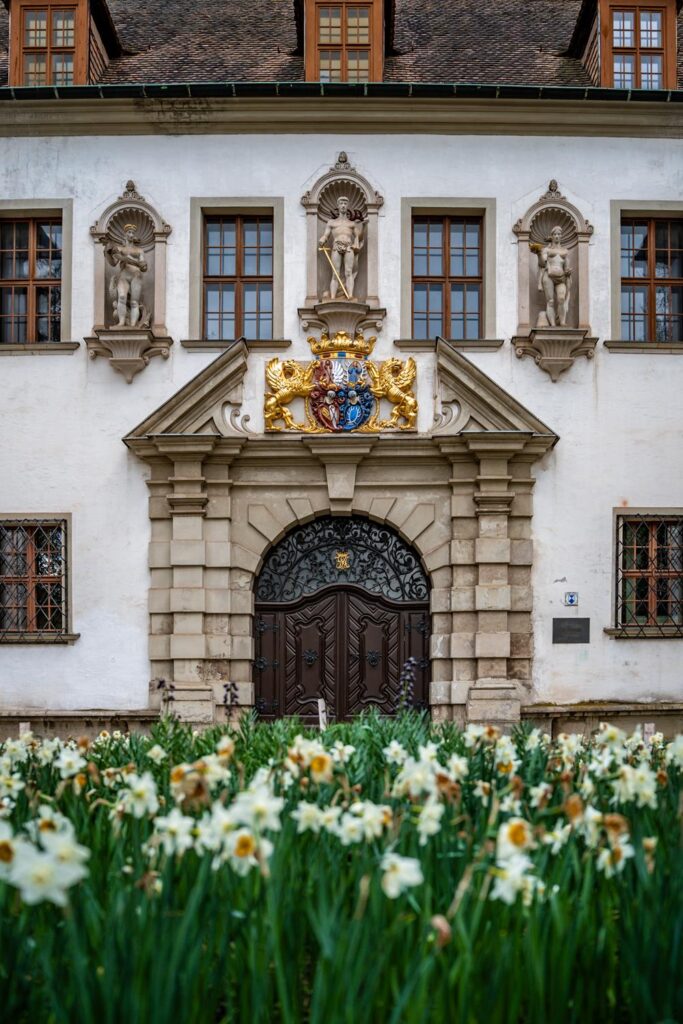
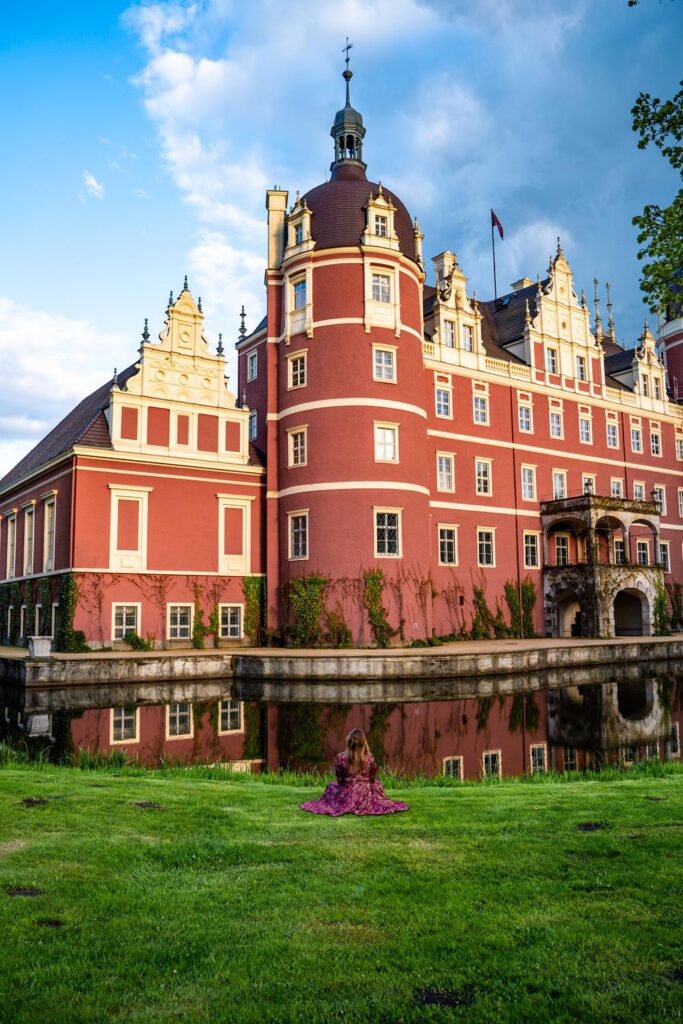
Cultural Center of Sorbian Lusatia
In the area, we saw four interesting places. We started with a bread and salt welcome at the Sorbian Cultural Center. I learned more about Sorbian culture, history, and language at the museum in Bautzen, but you can also stop here and learn a few interesting things about this culture, which is extremely close to Polish.
What surprised me the most was the similarity of languages – to Polish, similar traditions (kraszanki) or other Easter customs, which today also exist, among others, in the Opole Voivodeship.
Address: Friedenstraße 65, 02959 Schleife
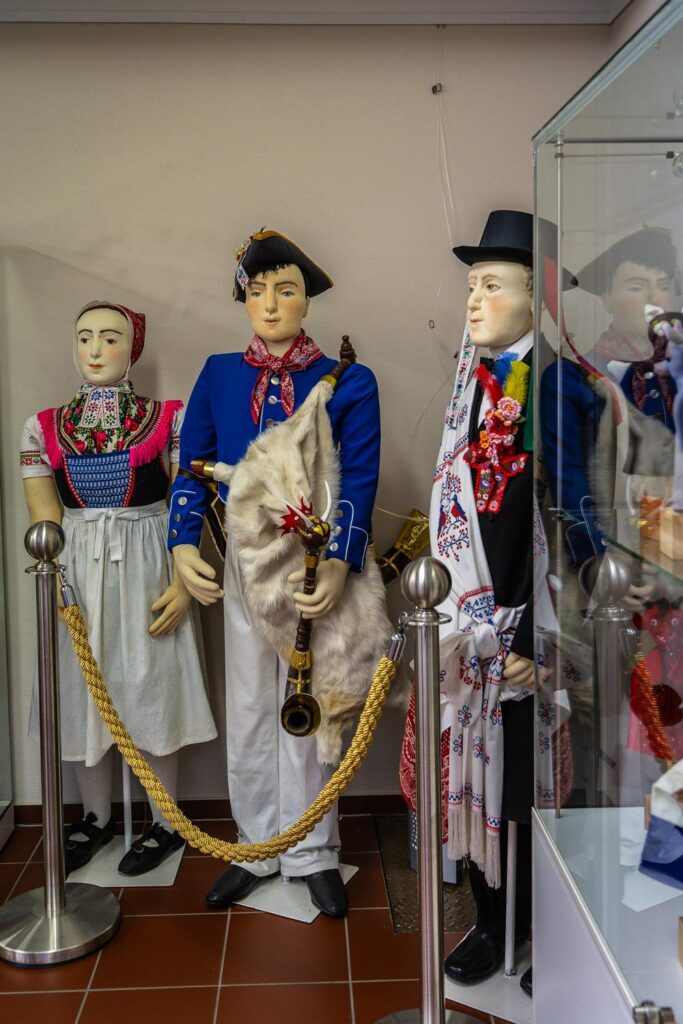

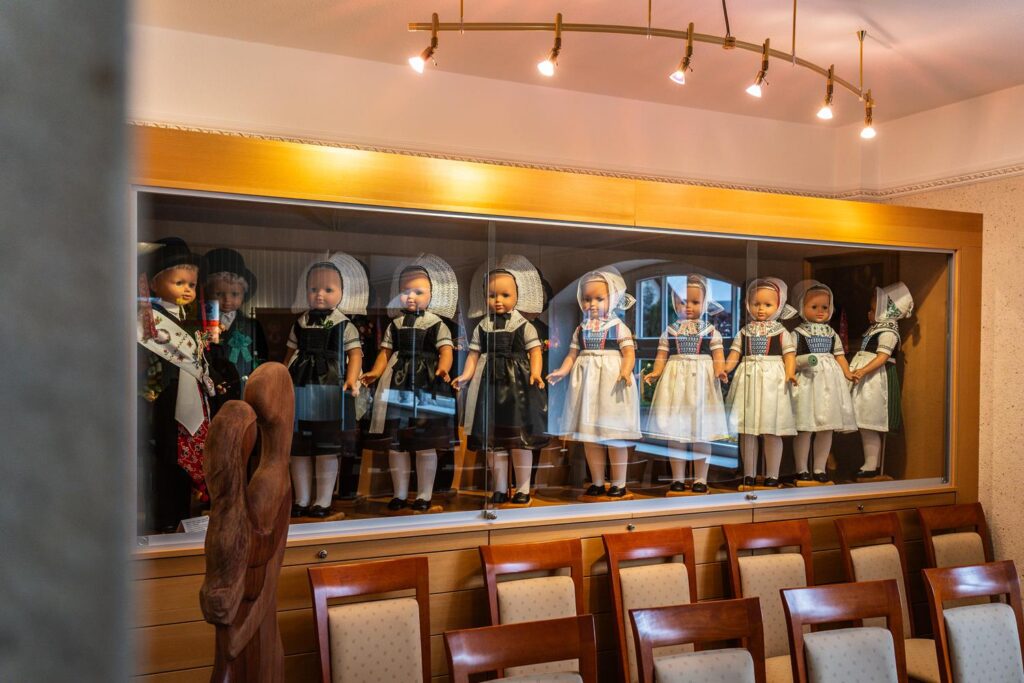
Nochten Park of Boulders – the largest rock garden in Europe
The park is an example of land reclamation after lignite mining. 7000 Scandinavian boulders, set in picturesque gardens, are one of the unique attractions. The boulders are remnants of glaciation, having traveled a long way from Sweden, Norway, or Finland. The park is mostly covered with plants; in the blooming season, thousands of heathers bloom there, and there are picnic areas or playgrounds.
A walk through the park takes about 2-3 hours. At the entrance, I recommend renting an audio guide or downloading the app and playing it directly on your phone.
The place encourages reflection: on one hand, we’ll see how the glacier changed the landscape and moved huge boulders; on the other hand, how humans have again changed the landscape of the place, first by mining coal, and later by planting trees or arranging the park.
More on the official website: www.findlingspark-nochten.de
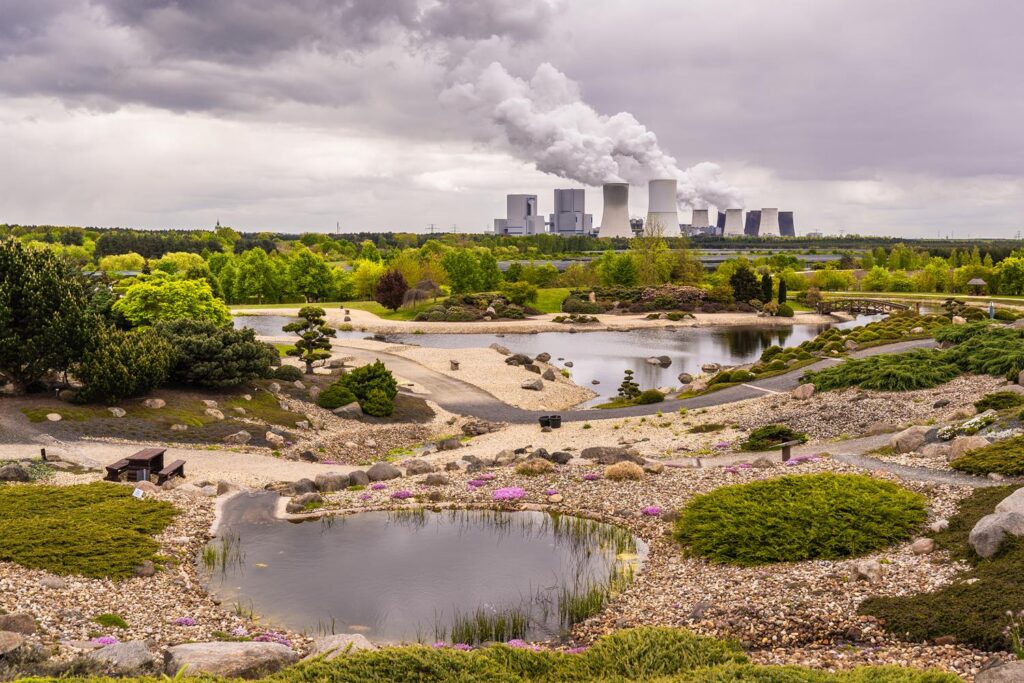
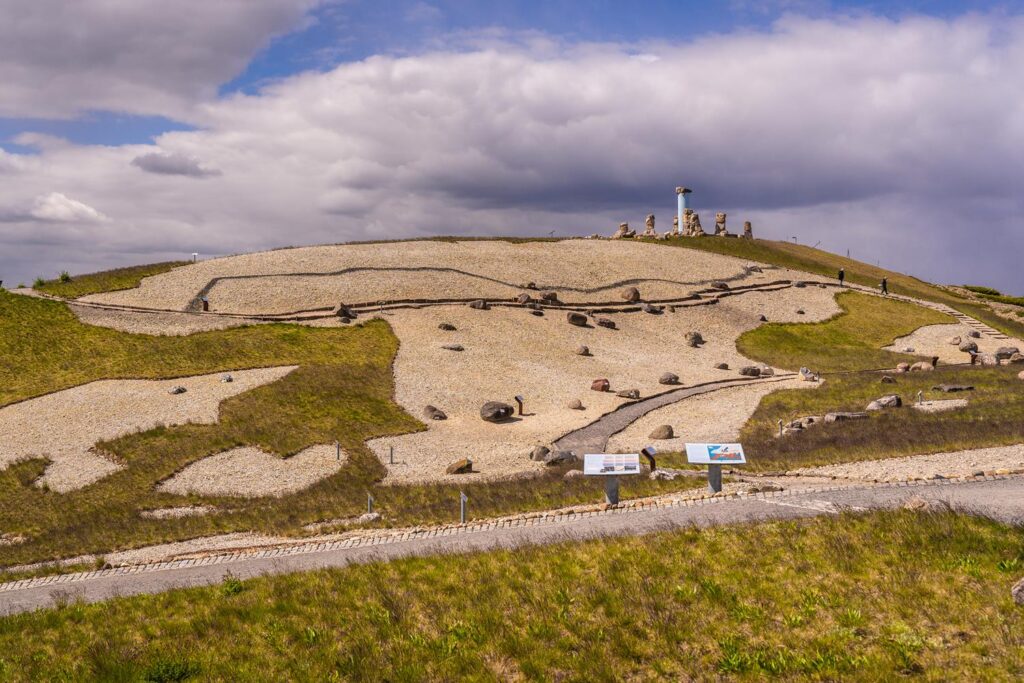
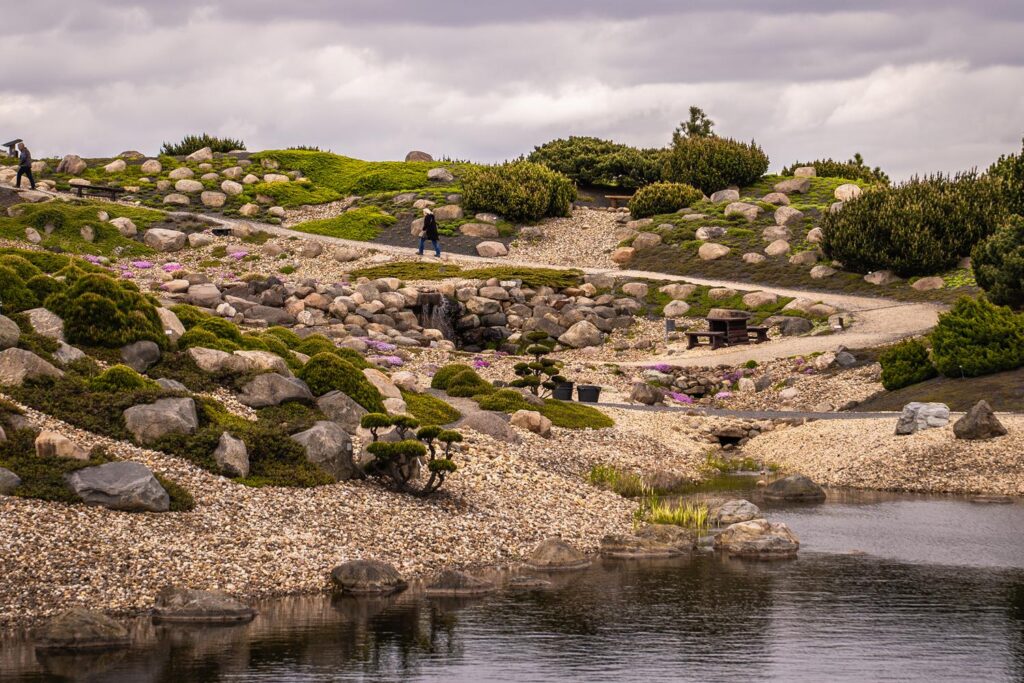
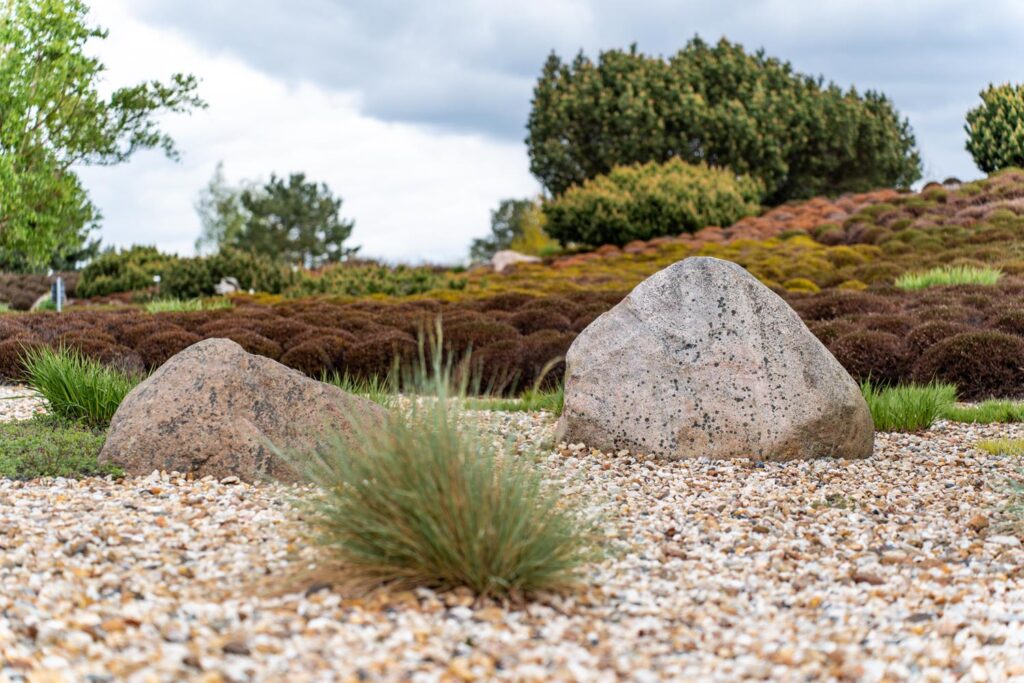
Kromlau Park
Just across the border, we’ll find a park famous for its azaleas and rhododendrons. Many say it’s one of the most beautiful parks in Germany. And there’s something to it, because we’ve been there twice and even on a cloudy day, it looks amazing! Here you’ll find works made of basalt rock, such as “Heaven and Hell” or the Devil’s Bridge (Rakotzbrücke). There are numerous legends and stories associated with the place. The bridge was built in 1860 so that its reflection in the pond would form a circle.
Returning to the park, in the local Swiss-style castle, weddings are organized, and in another historic building, you can rent accommodation. The place is really beautiful, and I hope to return for the rhododendron bloom.
Entry to the park is free.
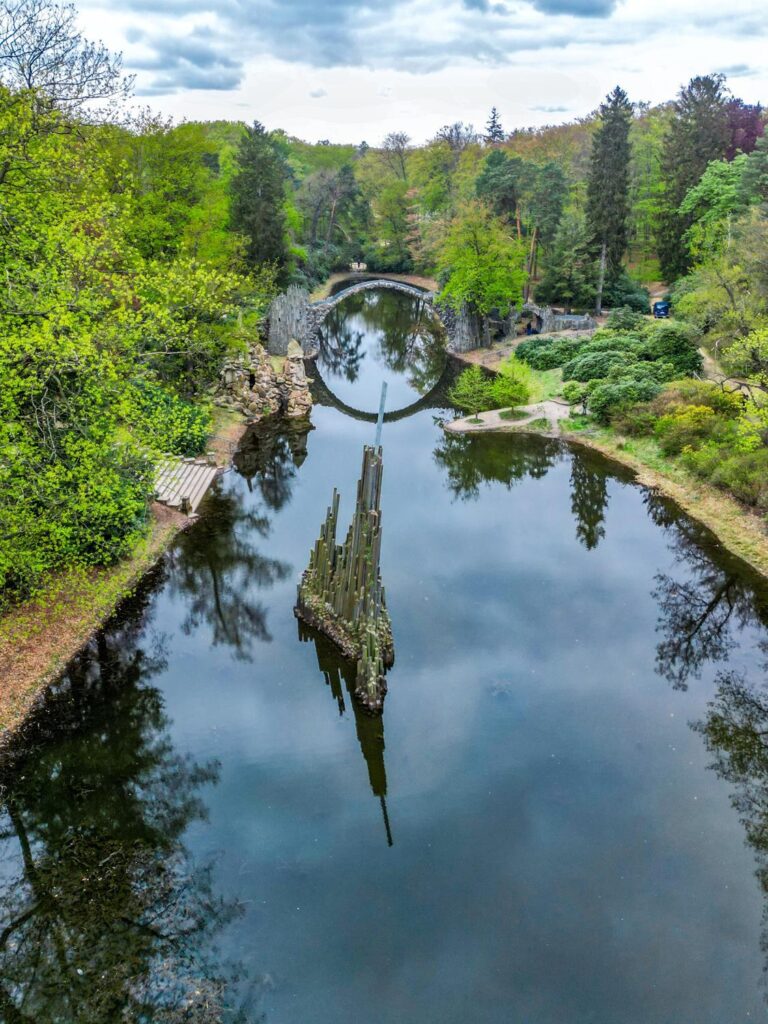
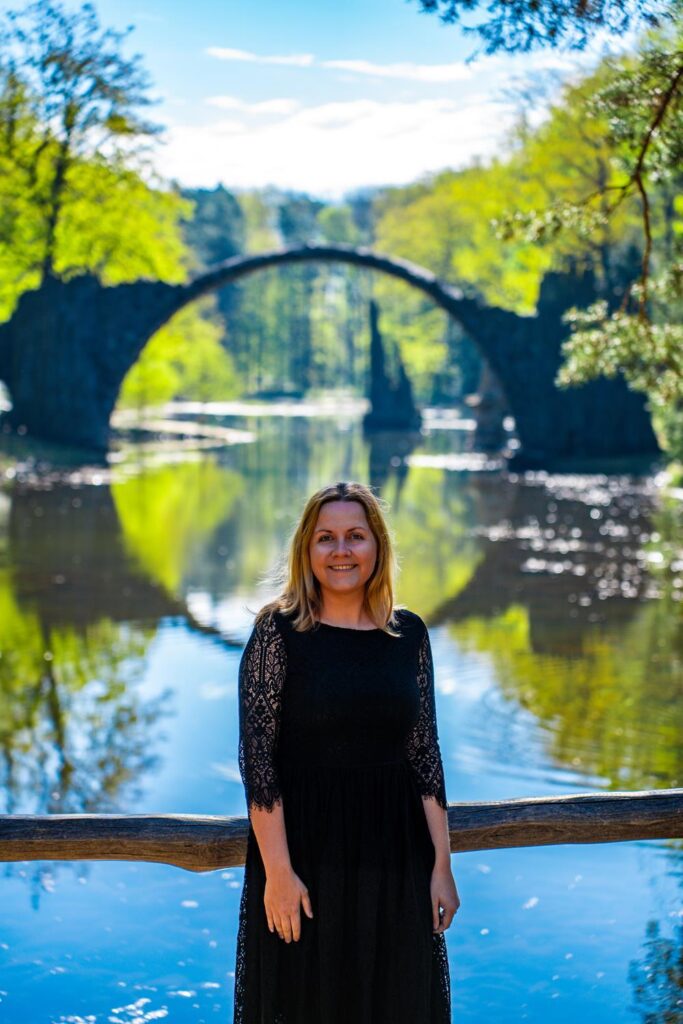
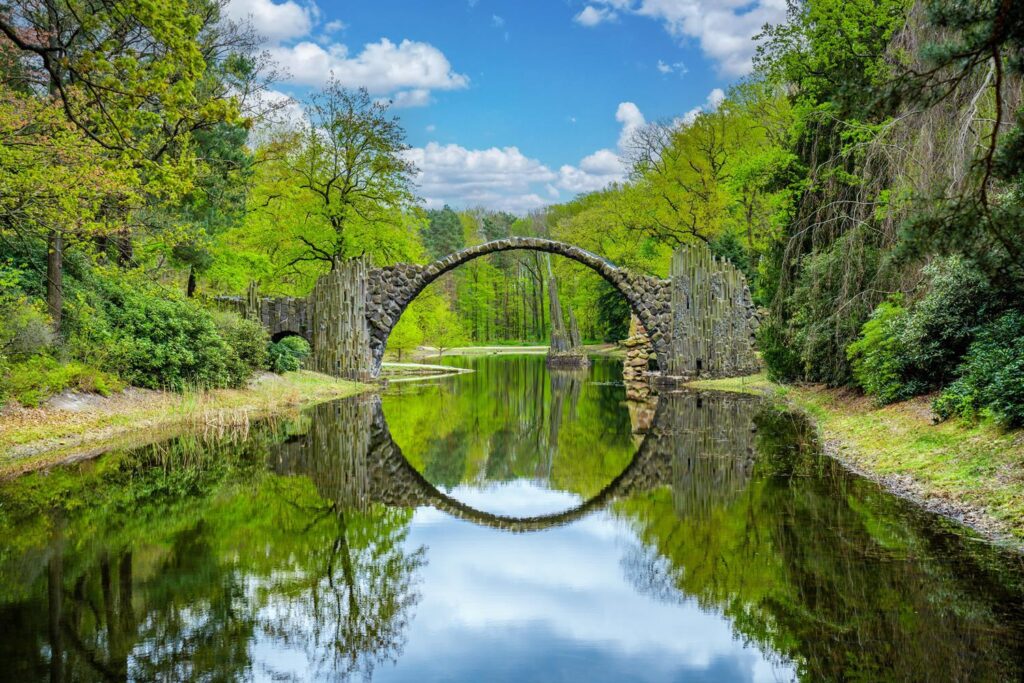
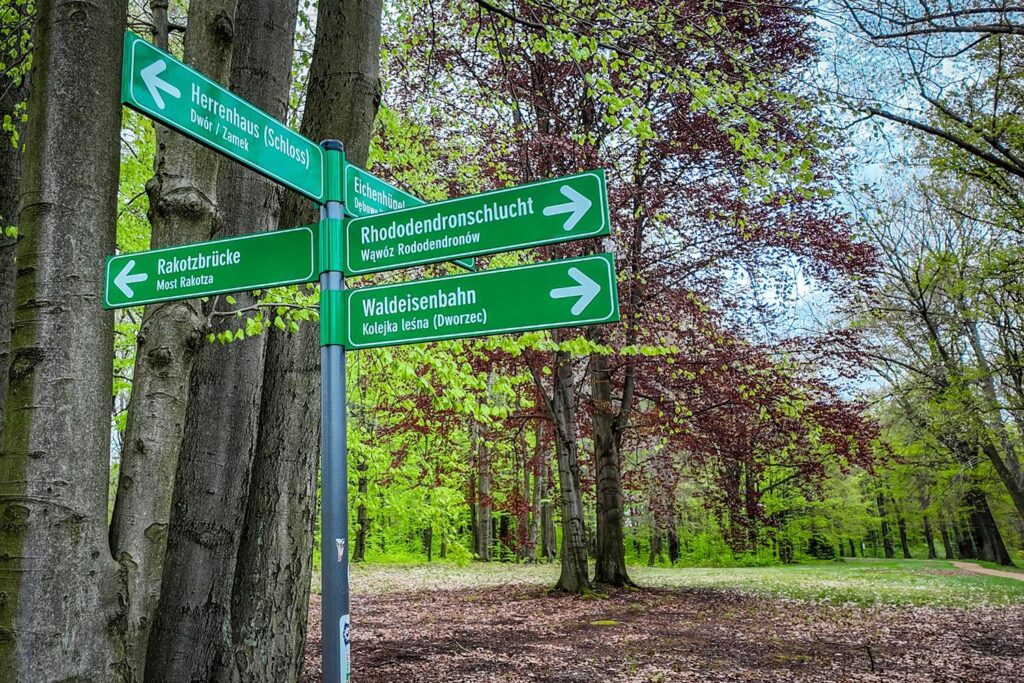
Erlichthof Reitschen
Open-Air Museum On the outskirts of Reitschen, we’ll find a reflection of what a Sorbian village from the 19th century might have looked like. The place is a bit at the end of the world, so I’m sure I’m not the only one who liked it. There are numerous wooden houses to visit, each with different exhibitions. For example, in the wolf’s barn, you’ll find an exhibition dedicated to wolves that inhabit this area. There’s also a bakery with a stone oven, a pottery workshop, a chocolate workshop, and much more. Near the settlement, there’s a pond with interactive exhibitions around it.
Entry to the settlement is free. A symbolic fee applies to the museum farm and the wolf’s barn. An audio guide, also available in Polish, can be picked up at the tourist information office; the exhibition in the wolf’s barn is also prepared in Polish. Throughout the year, various events take place here, including antique fairs.
More on the website: https://erlichthofsiedlung.de/
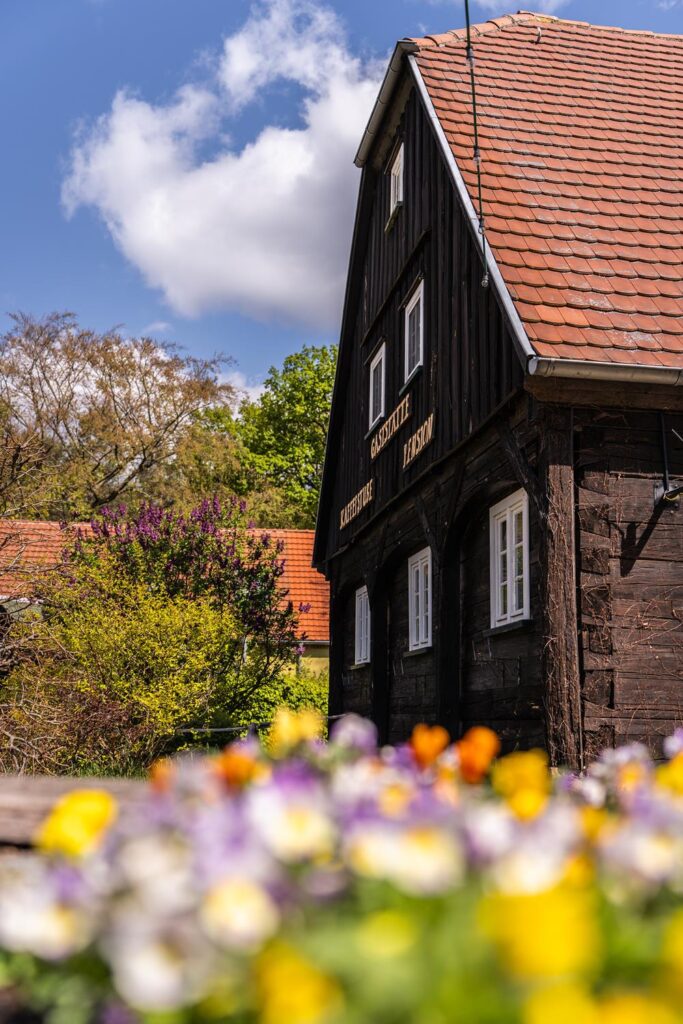
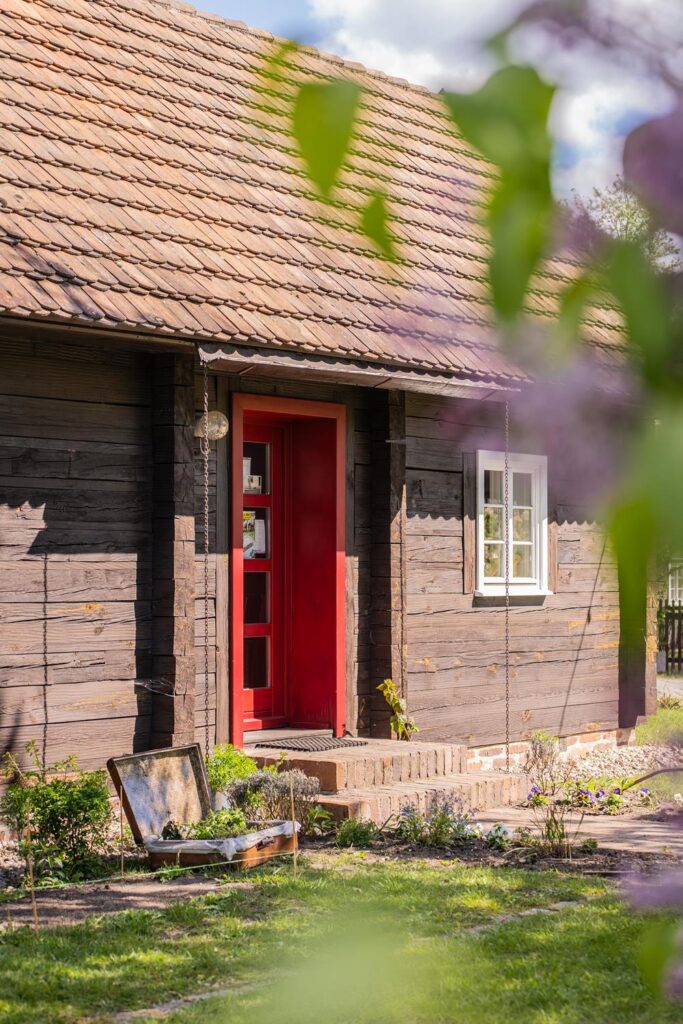
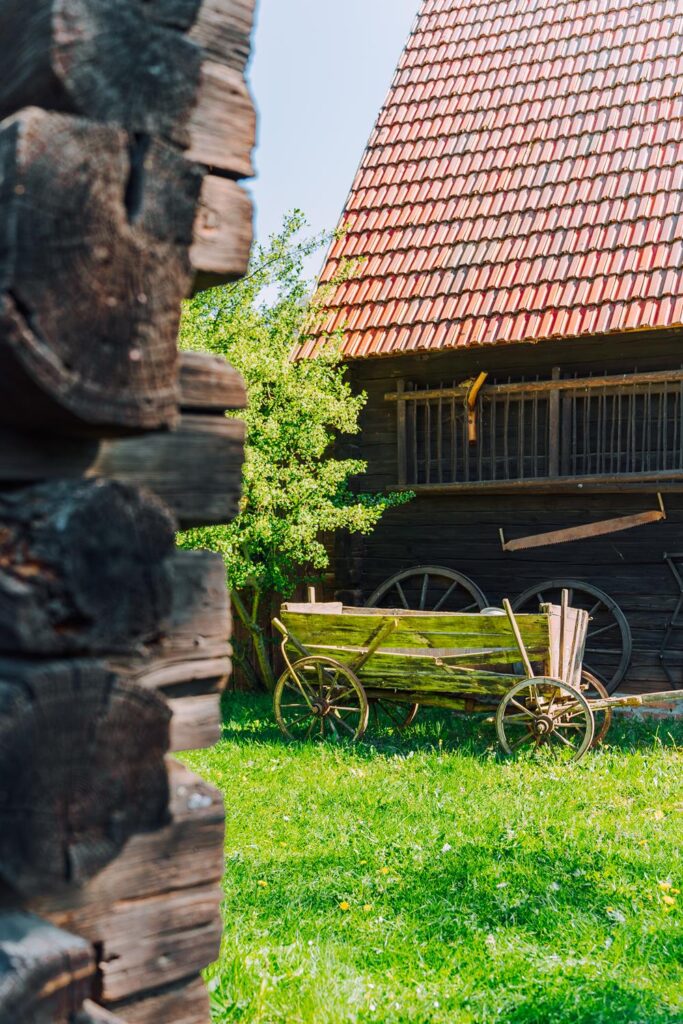
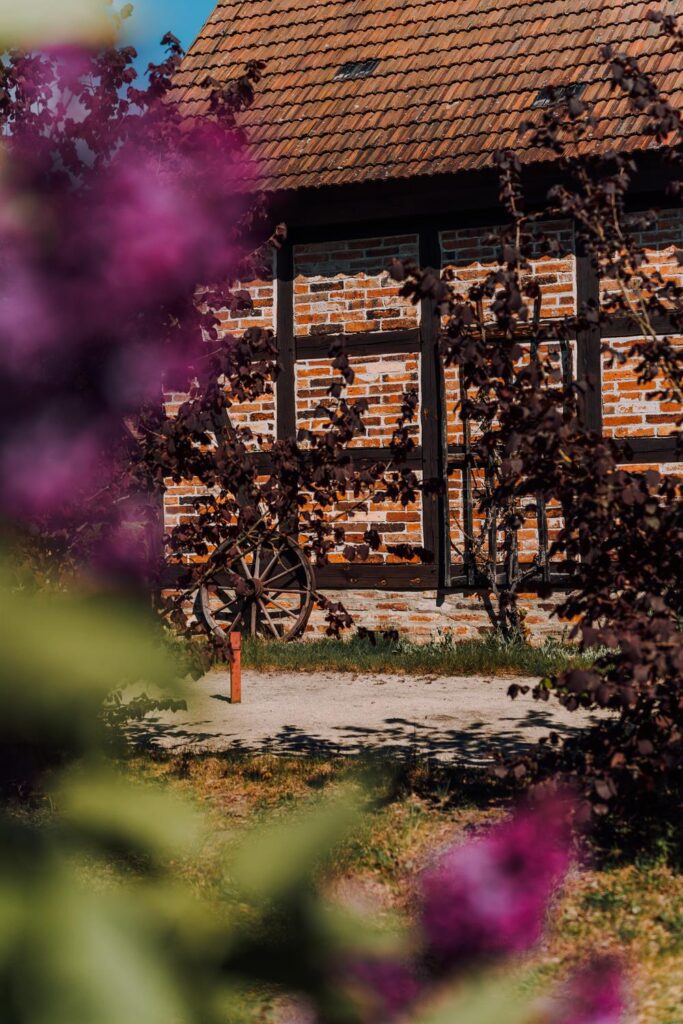
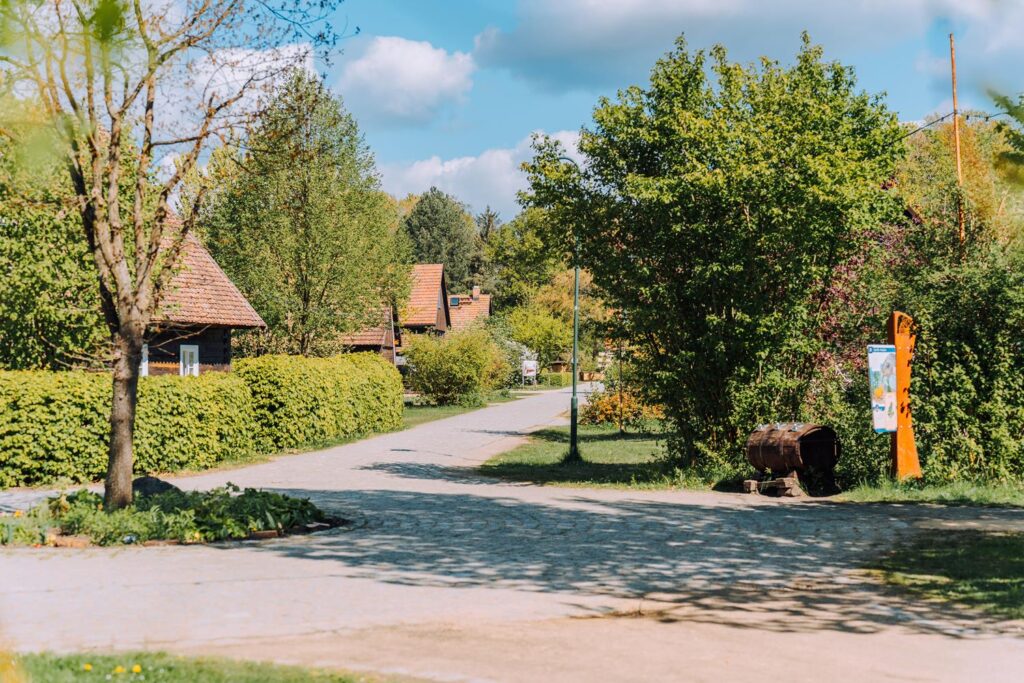
Goerlitz
I’ll start with the obvious thing, but Görlitz is adjacent to Zgorzelec, and previously, until the end of World War II, it was one city. What to see in Görlitz? Görlitz has over 950 years of history, over 4000 monuments, so exploring it in a day or two is a challenge. Therefore, it’s worth choosing what interests us the most beforehand.
I was particularly interested in the film trail – Görlitz is picturesque enough that many films were shot here, including my favorites! “The Grand Budapest Hotel,” “Around the World in 80 Days” (with Jackie Chan). But also others, like “Goethe!,” “The Book Thief,” or “Inglourious Basterds.” We managed to get inside the department store where the film hotel was located, and also learned interesting facts about the making of cookies “from Mendel.” These cookies were also made in Görlitz, but making them was so difficult that they melted after two hours. The lady who made them had to make hundreds of them, and they were only shown a few times in the movie.
I’ve heard a lot of good things about the zoo in Görlitz, that it shows how nature works in this place. I went to see it, and indeed, it’s not a typical zoo with exotic animals; instead, there are many “ordinary” species, you can watch tiny chicks grow, feed a goat or a donkey, watch a raccoon scheming.
I’ll talk about the city itself soon in a separate post, but apart from walking around the Old Town, it’s worth seeing one of the most beautiful libraries, containing 40,000 volumes. An amazing place: you can view books by appointment and following procedures (including gloves). The original name of the place: Oberlausitzische Bibliothek der Wissenschaften.
We toured the city with Petrus – a Dutchman who speaks Polish very well, having lived in Wroclaw and Legnica before, so not only is the city interesting, but the tour itself was really fascinating.
Accommodation: For two nights, we stayed in the city center, in a spacious apartment. Very tasty breakfasts, tranquility + parking nearby (additional fee). Leaving the link: VIA`s Appartements und Ferienwohnungen
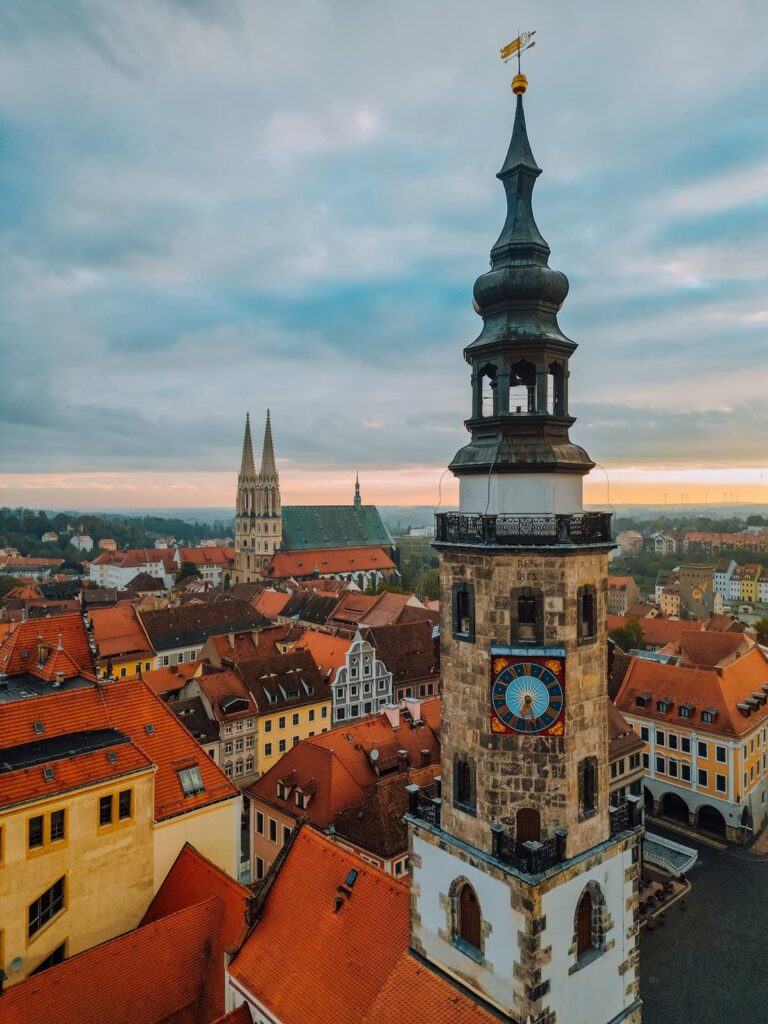
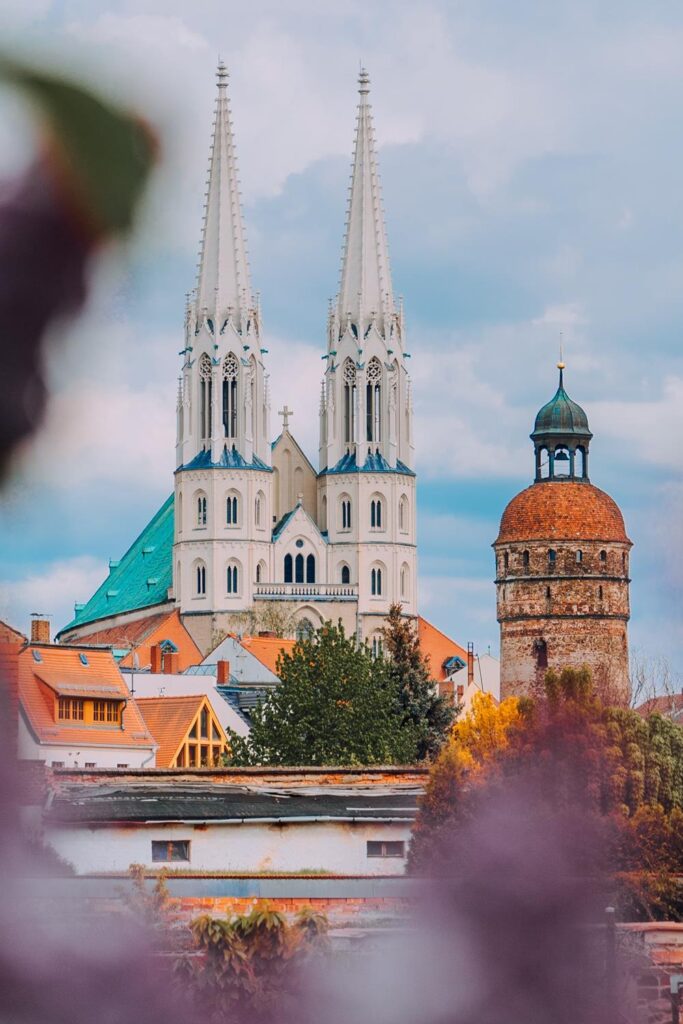
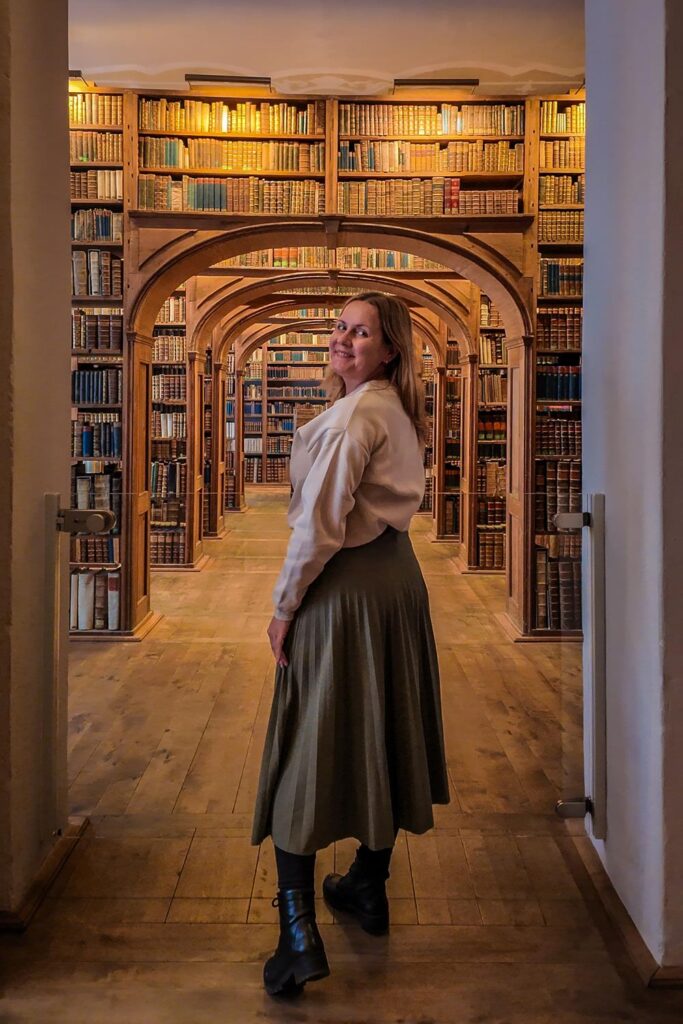
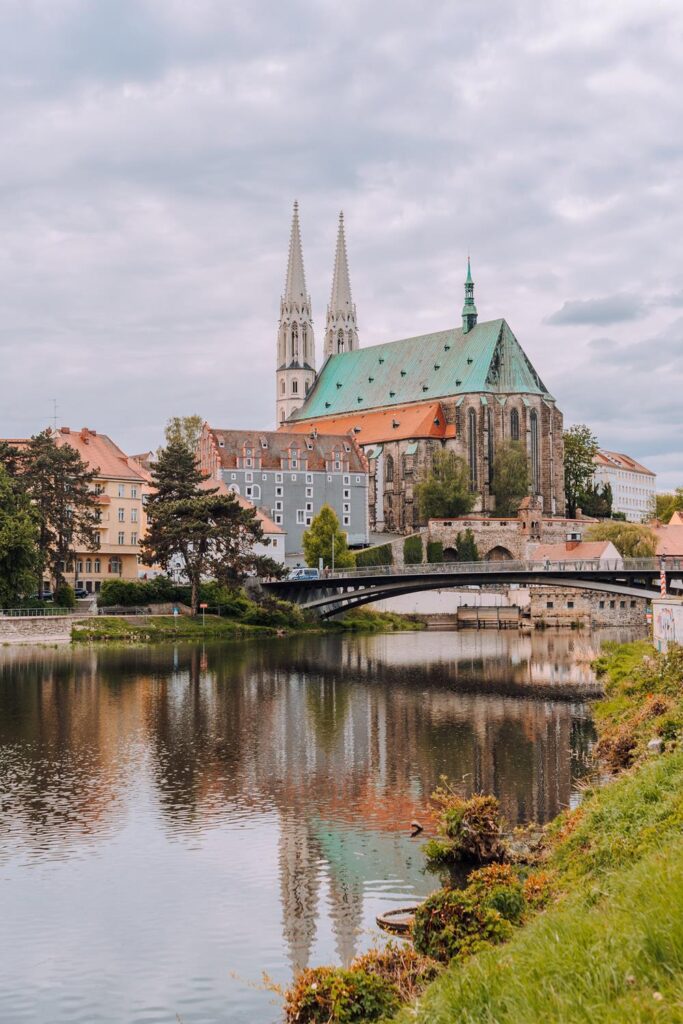
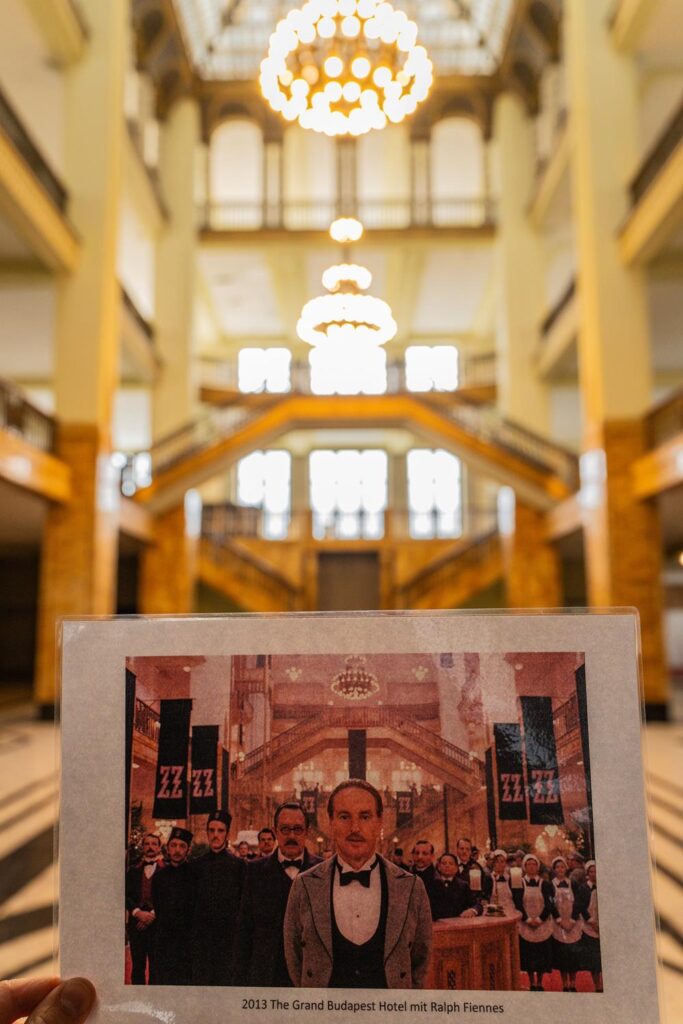
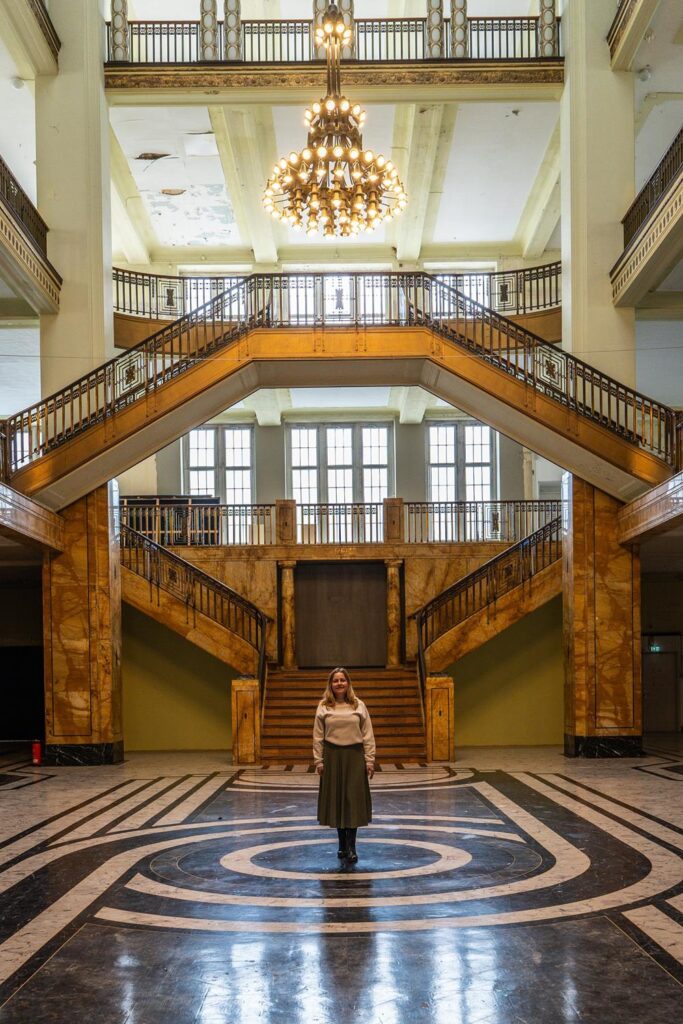
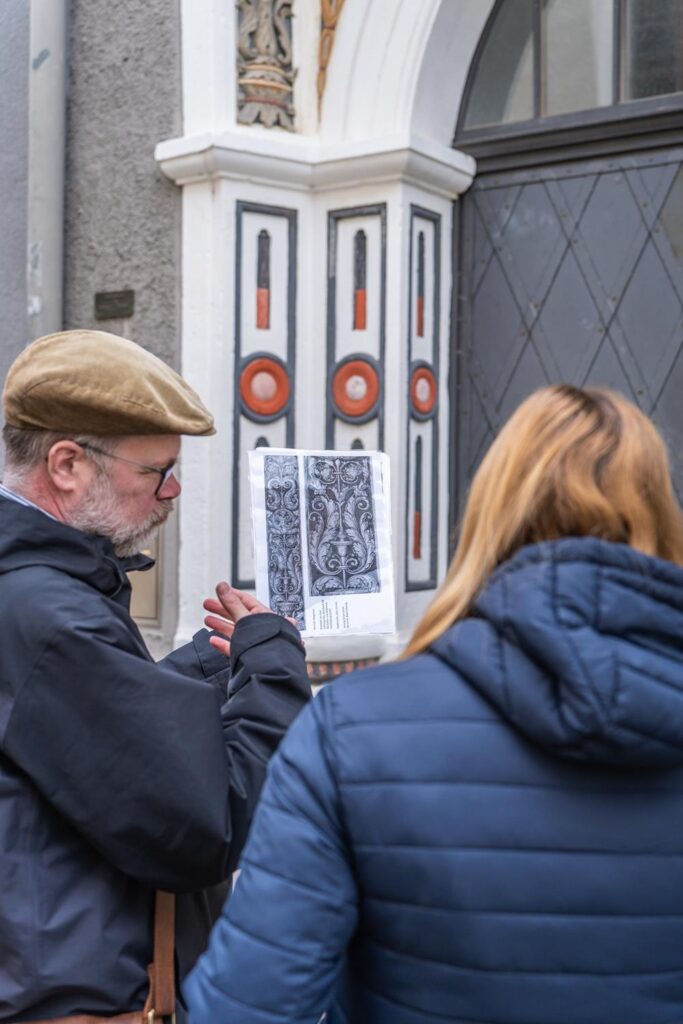
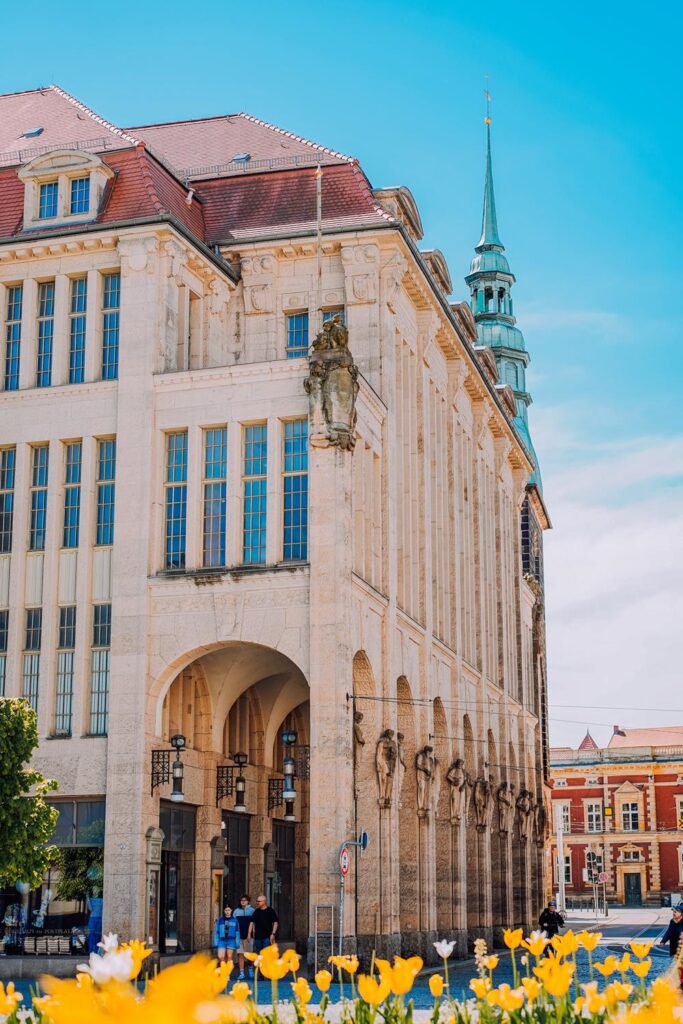
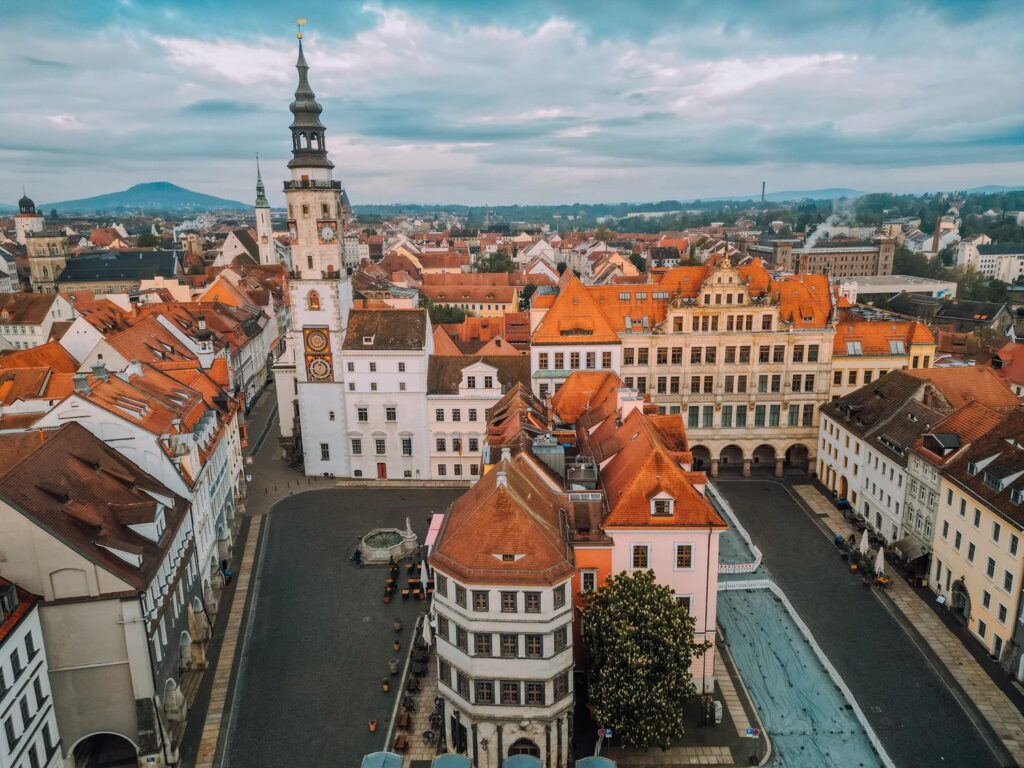
Bautzen
I invite you to visit Bautzen, or as we call it, Budziszyn. Bautzen is located 40 minutes from the Polish-German border. In addition to its beautiful architecture and historical curiosities, in 1002, the city was annexed to Poland. The famous Budziszyn Peace Conference also took place here after the Polish-German war. The city has quite a few museums, some with exhibitions or audio guides in Polish.
Today, the city is famous for its MUSTARD! It’s worth going to the Mustard Museum and to a restaurant that serves dishes with mustard. If you’re going to Bautzen, it’s definitely worth eating at this very mustardy place.
In Bautzen, there are 17 defense towers – some of which you can climb, so it’s definitely an additional attraction. There’s the Leaning Tower, and at the top of the cathedral tower, the Kuschel family lives. To get to the apartment, you have to climb 217 stairs, and as you can imagine, there’s no elevator. Among other curiosities, the oldest house in Bautzen is the so-called “Witch’s House”. You can visit it on selected days, unfortunately, we didn’t manage to go inside.
This time our guide was Wolfgang, who was born back when Lower Silesia was German. His passion is guiding tourists, and it showed; he also has keys to various attractions in the city.
Accommodation: For three nights, we stayed in the center of the Old Town, in a charming hotel ApartOne. Very close to attractions, we had breakfast in a palace nearby + free parking was outside the Old Town. Leaving the link: ApartOne Altstadt-Hotel
See also: Exploring Bautzen: A Journey Through the City’s Best Attractions
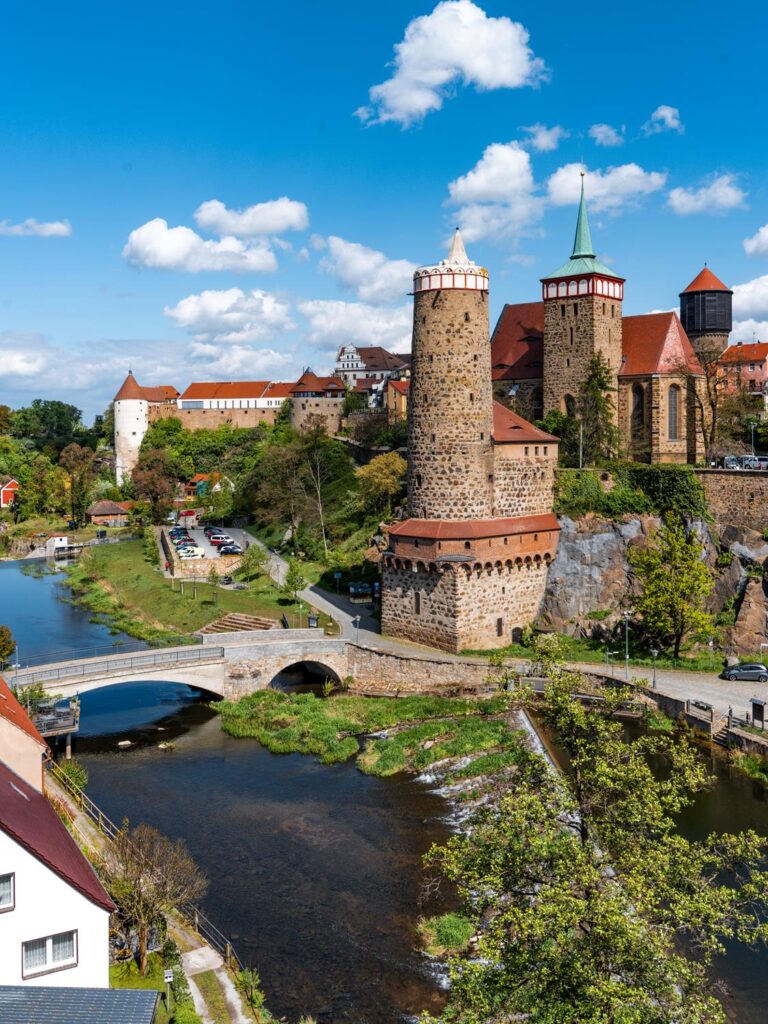
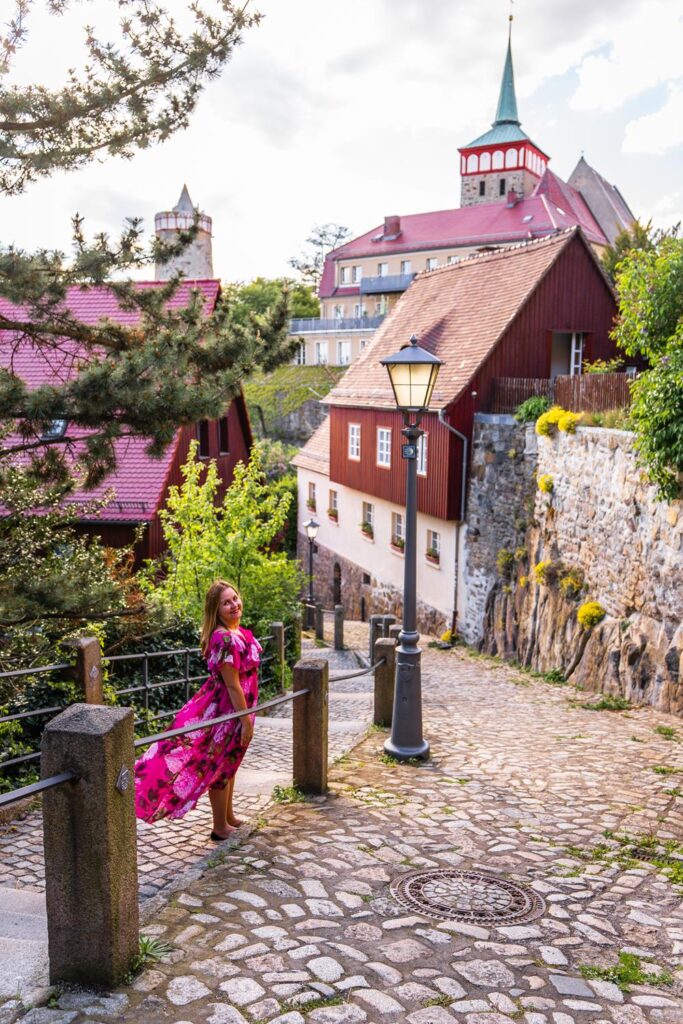
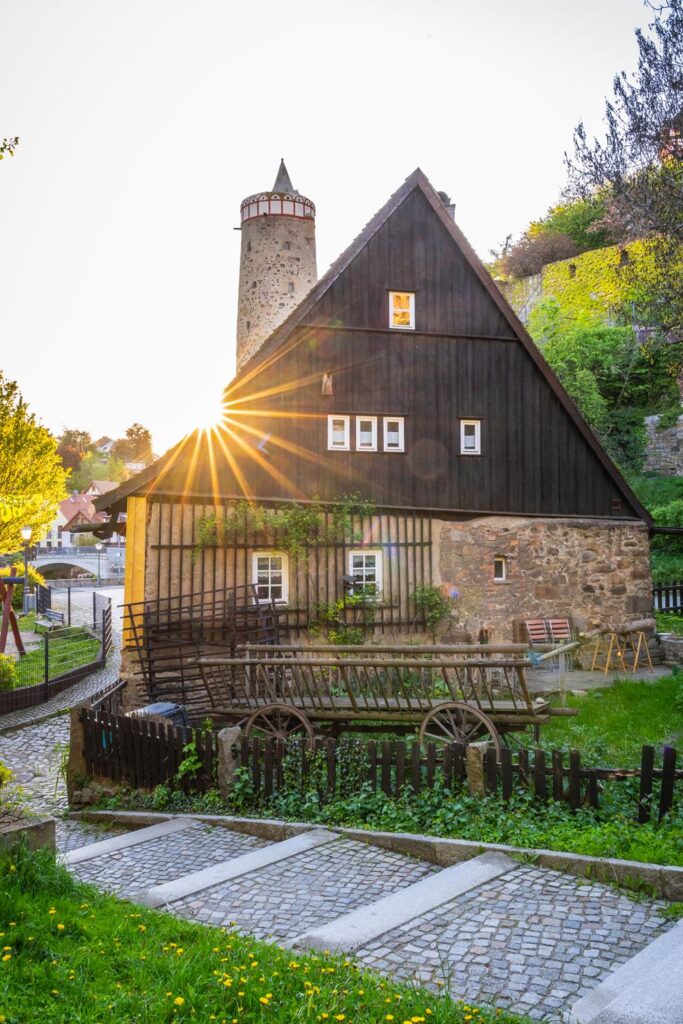
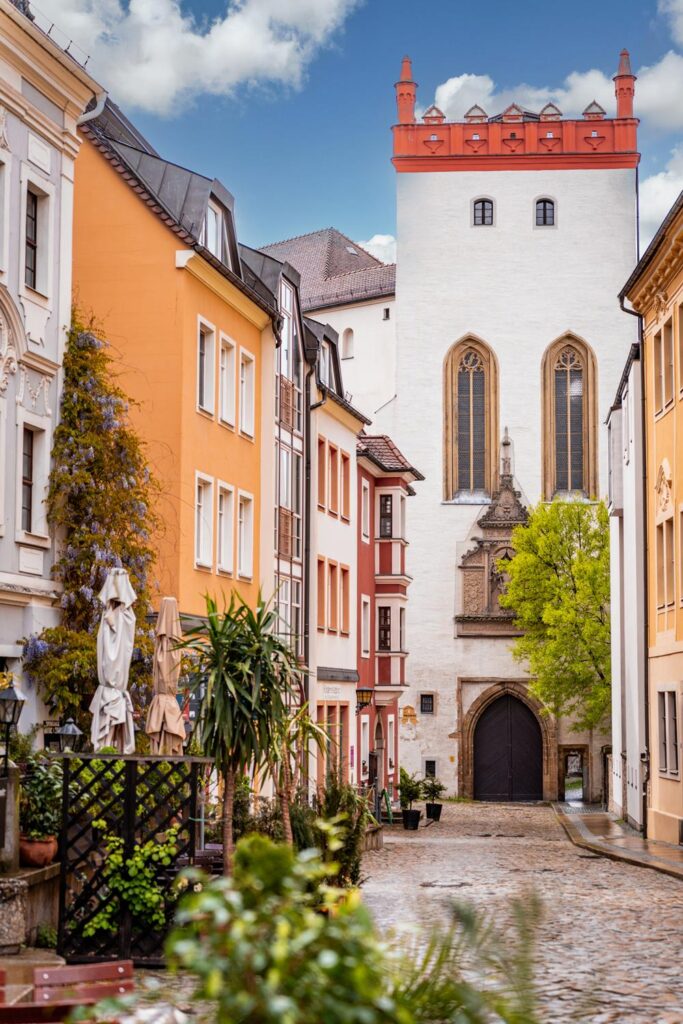
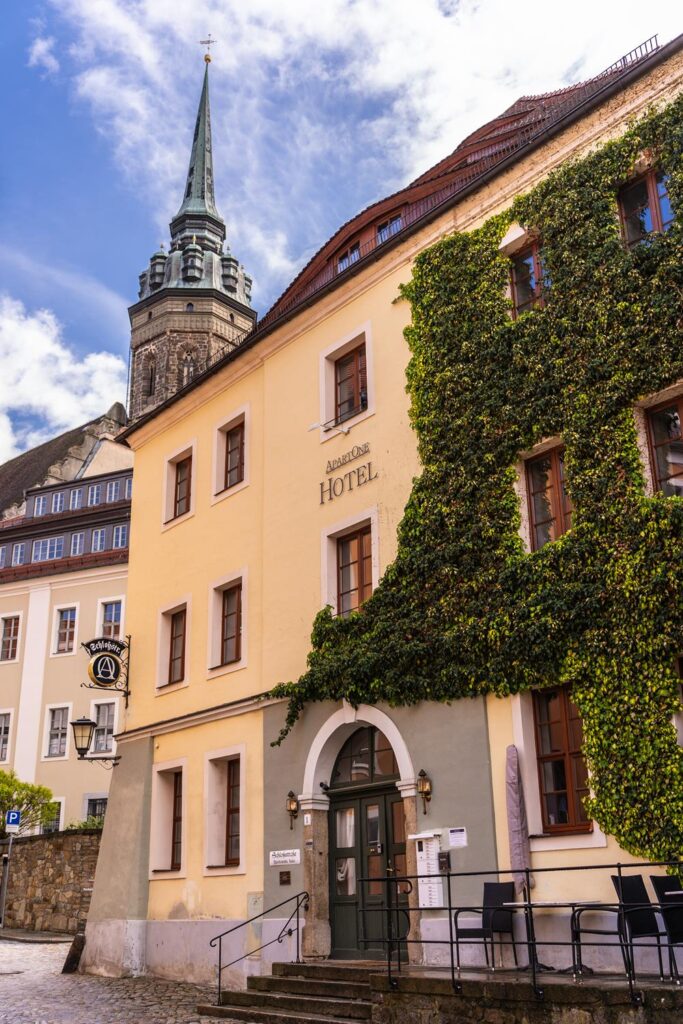
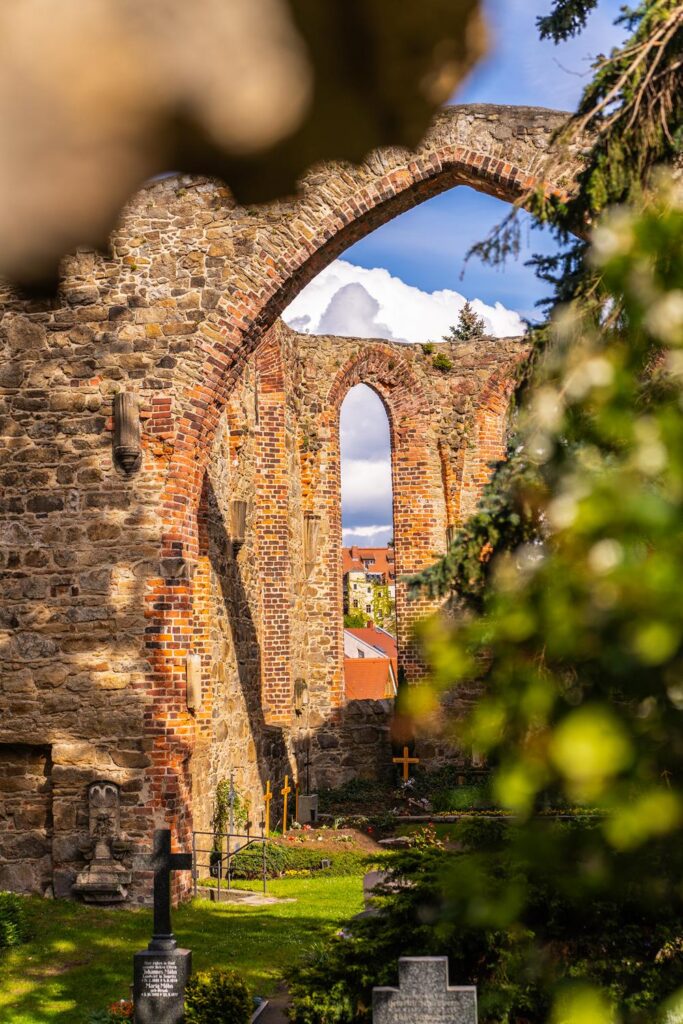
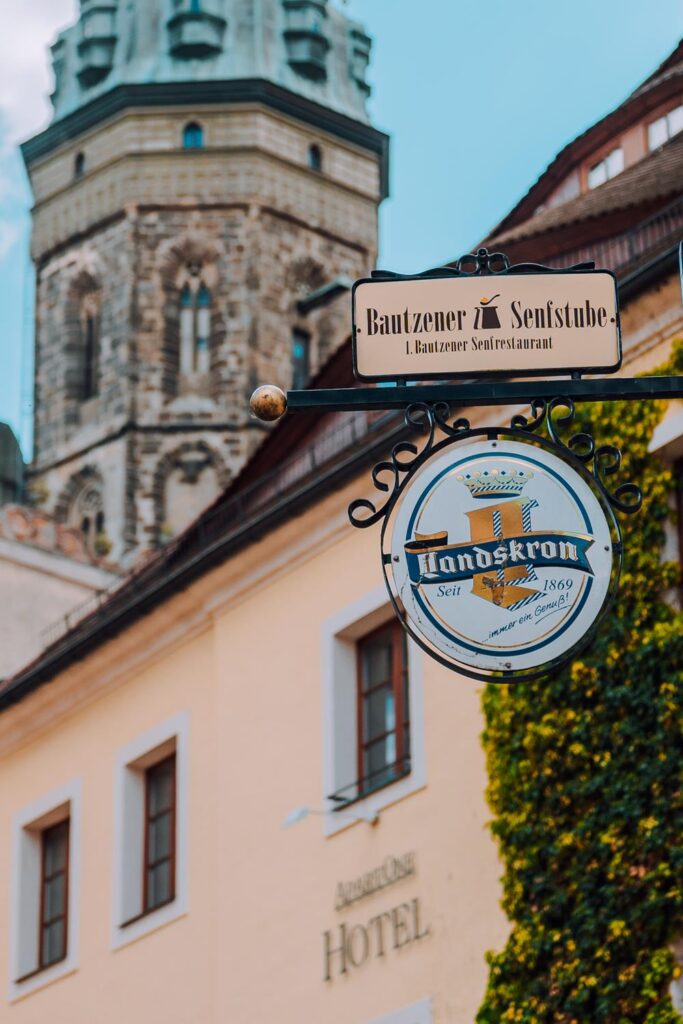
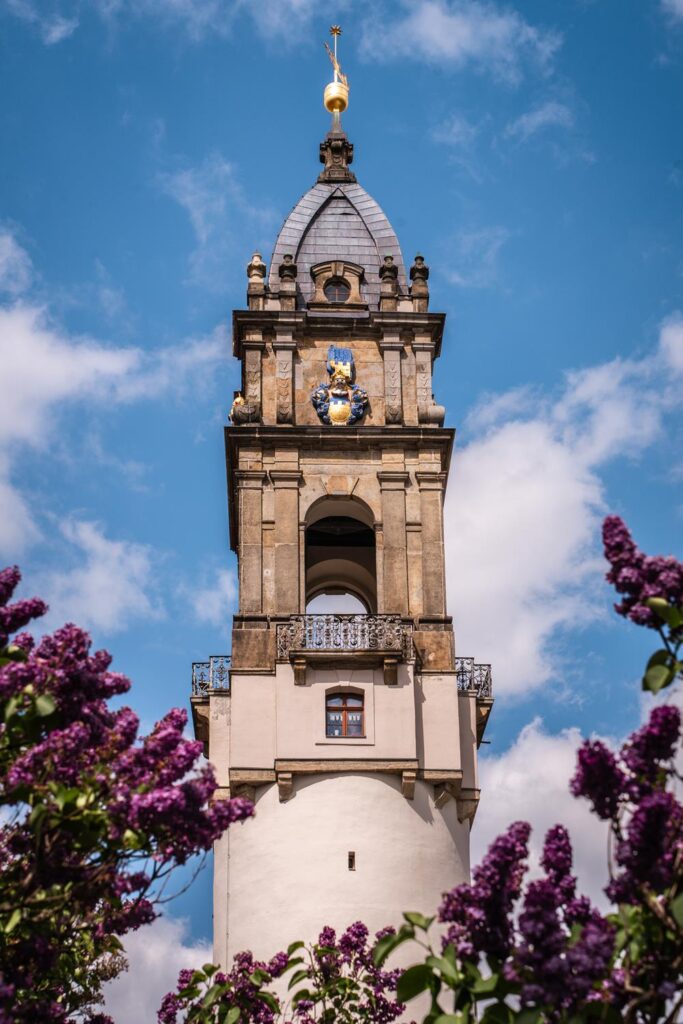
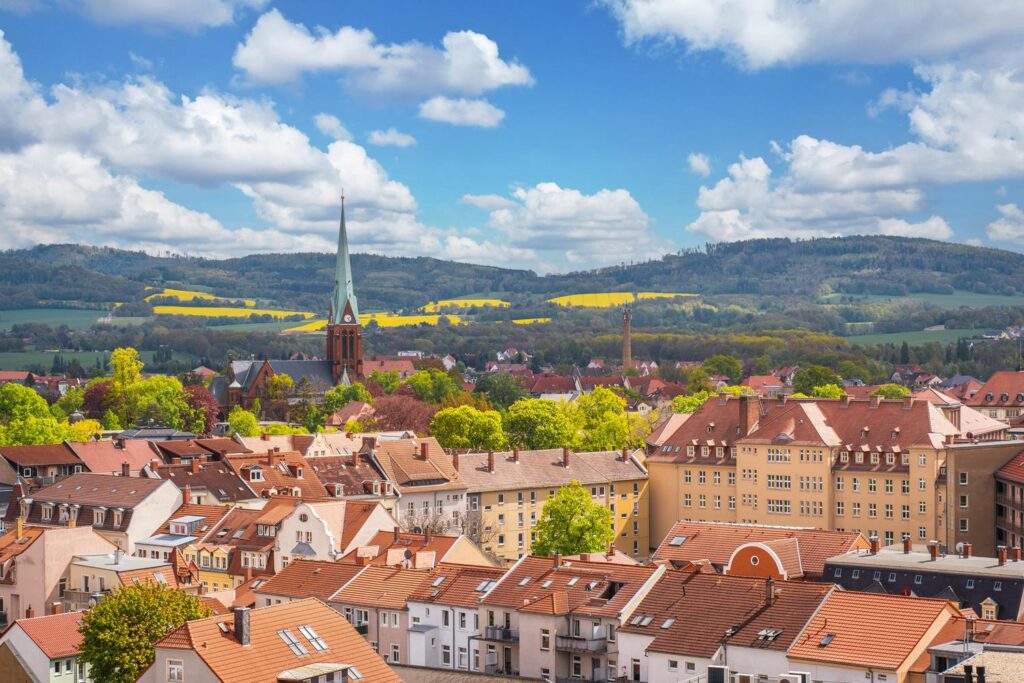
Biosphere Reserve in the Land of a Thousand Ponds
The Biosphere Reserve of the Heath and Upper Lusatian Pond Landscape has belonged to UNESCO biosphere reserves since 1996. Its area covers 30,102 hectares, and over 5000 species of animals and plants have been identified within the reserve.
There’s plenty of walking opportunities; we took a five-kilometer walk around the Guttau pond. At this time of year (spring), you can listen to bird songs and frogs, and I dream of coming back in the autumn to observe more animals. Now they were hidden, busy with spring activities.
In the village of Wartha, a festival takes place twice a year, so if you’re in the area, it’s worth stopping by. There are regional products, you can buy plants, and many other things. I had the opportunity to participate in the spring festival, and it was really nice.
More on the website: https://www.biosphaerenreservat-oberlausitz.de/
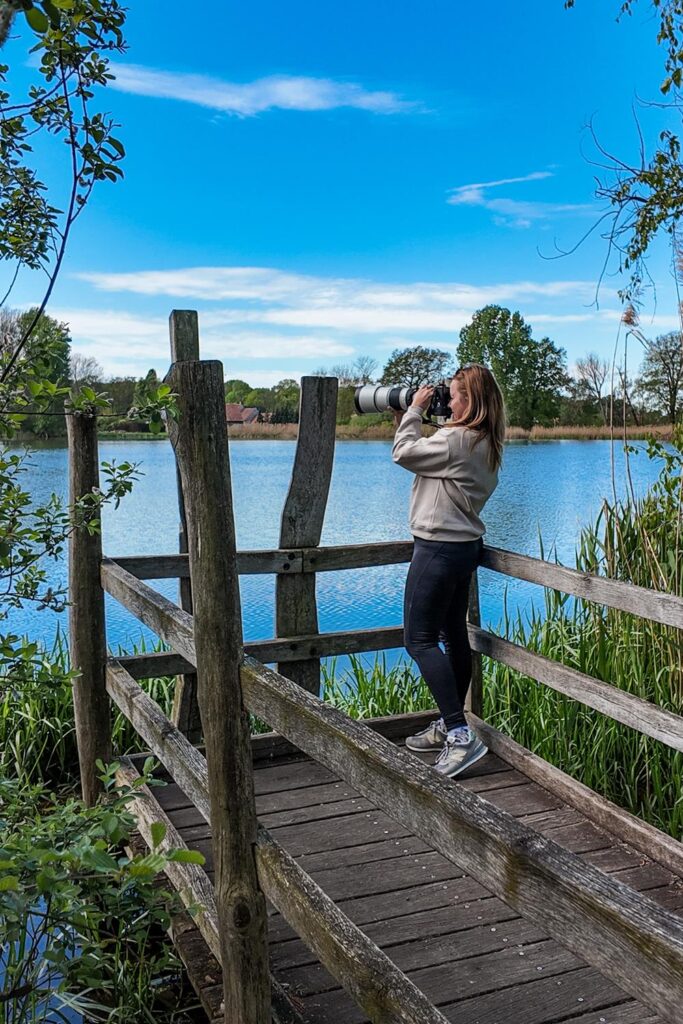
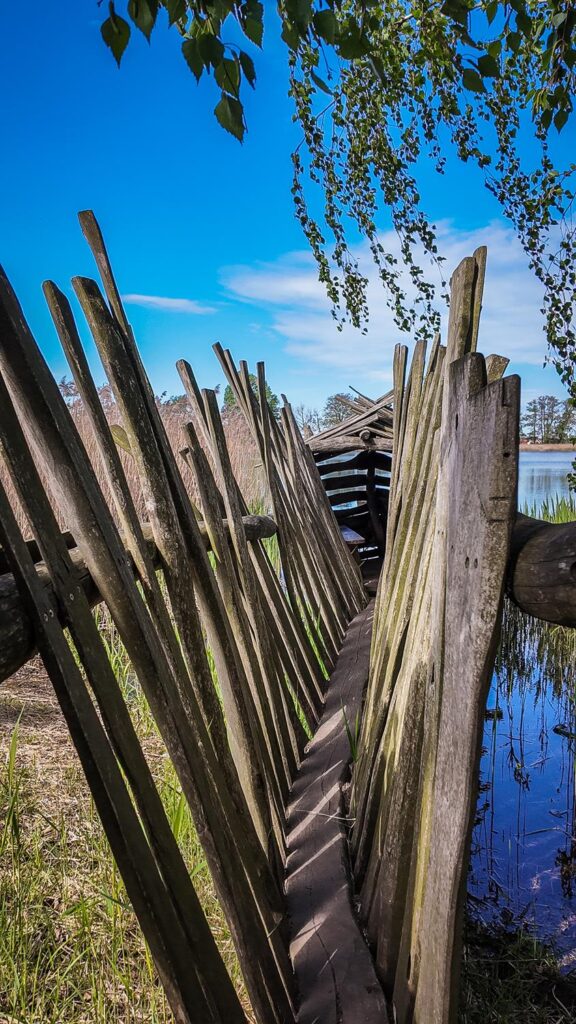
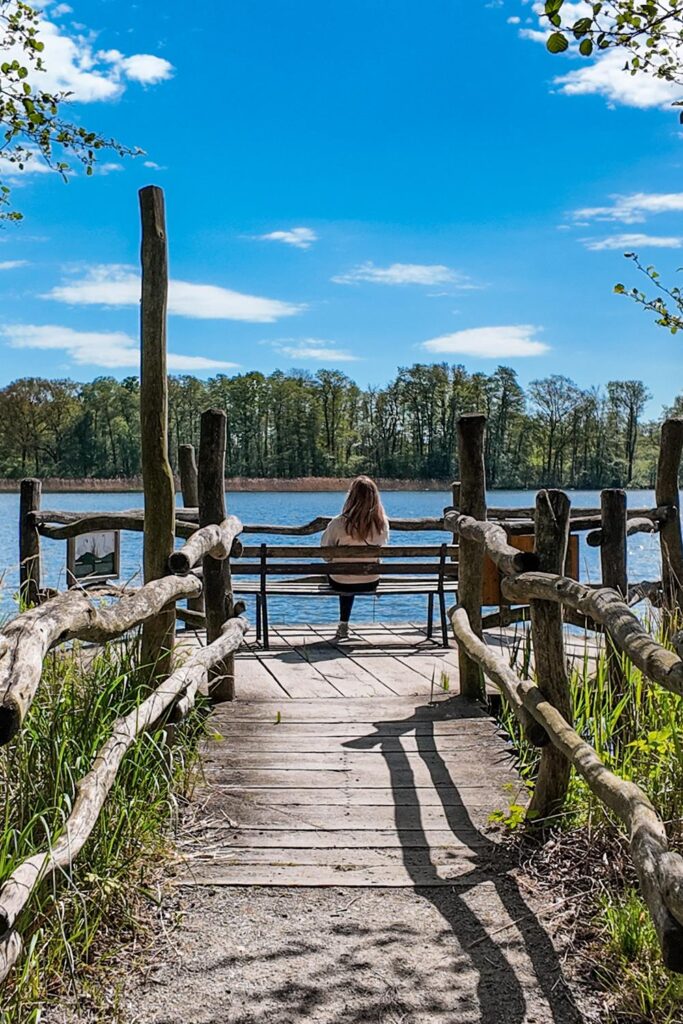
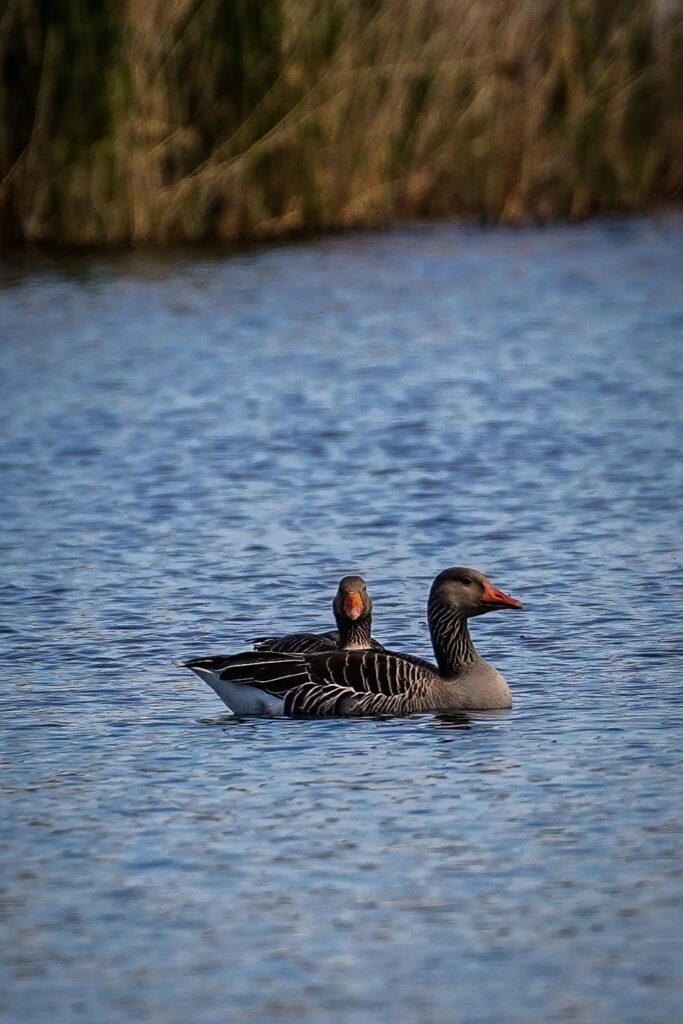
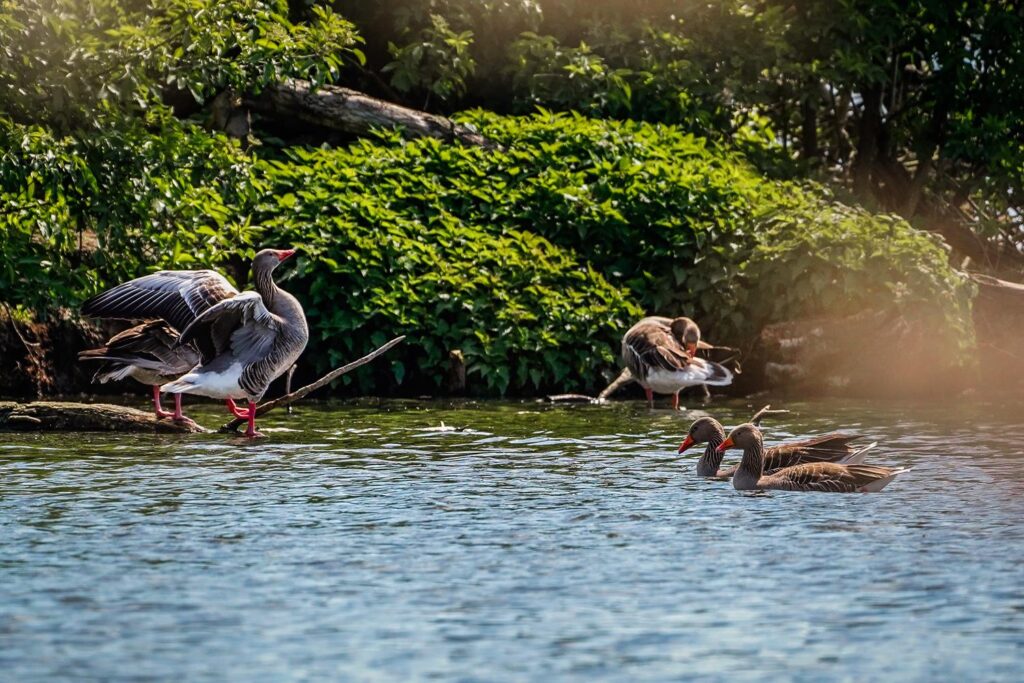
House of a Thousand Ponds
Before you go hiking, it’s worth visiting the Tourist Information Center “Haus der Tausend Teiche” in Wartha, which has a great exhibition about heaths and the landscape of Upper Lusatia. At this exhibition, you’ll learn about the biosphere reserve, what it deals with, and how humans influence nature. They also show how people have been managing ponds for centuries. Before entering the permanent exhibition, you can watch a short film about the biosphere reserve (also in Polish). Besides a large aquarium with local fish, there’s also a laboratory where you can see plants and animals under a microscope, and a kitchen where they show how to prepare traditional blue carp.
More on the website https://haus-der-tausend-teiche.de/
Hiking in Upper Lusatia
There are many more hiking spots in this area. The ponds are beautiful, but after one hike, we chose to hike around Gröditzer Rock. The trail takes about 2 hours – you’ll walk 5 kilometers in a picturesque atmosphere.
Tip: We parked next to Gröditz Palace. You can visit it with a guide, prior registration is required on the website www.pro-groeditz.de
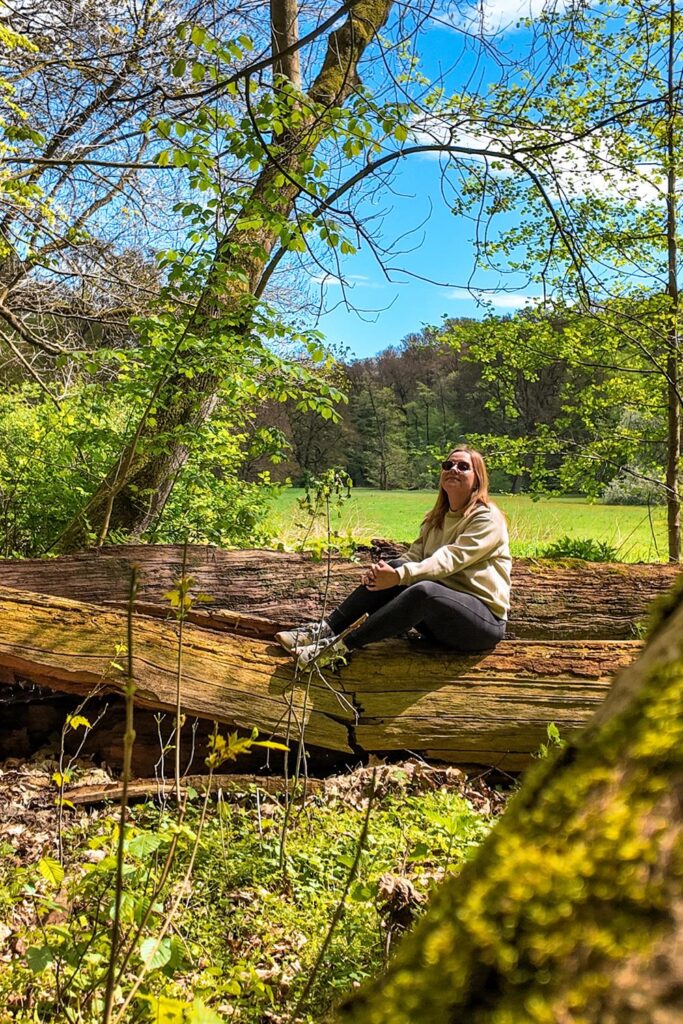
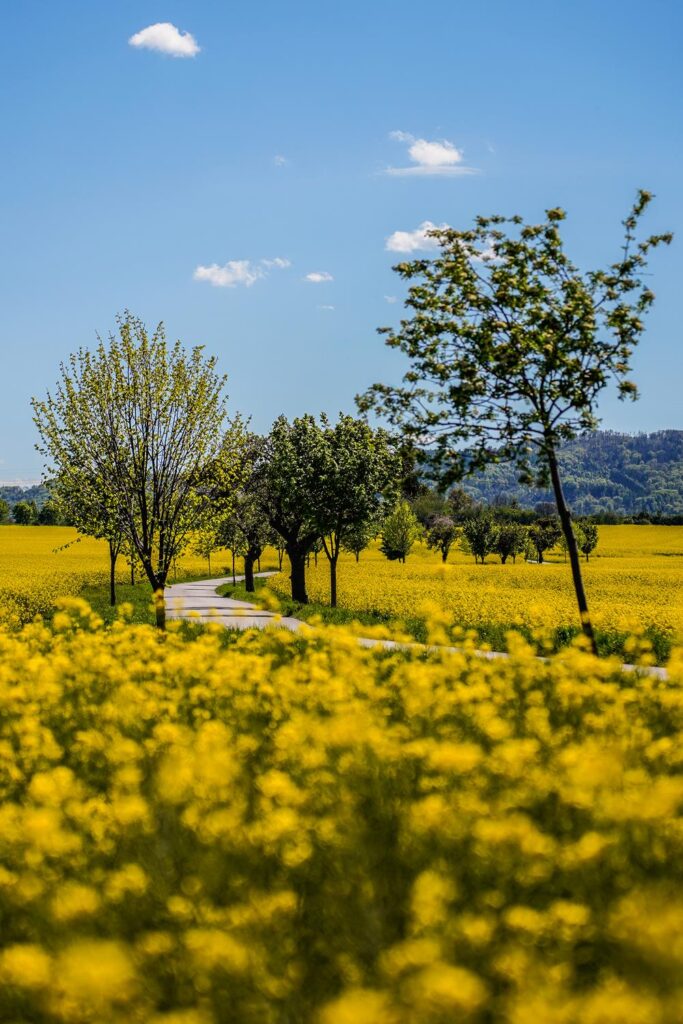
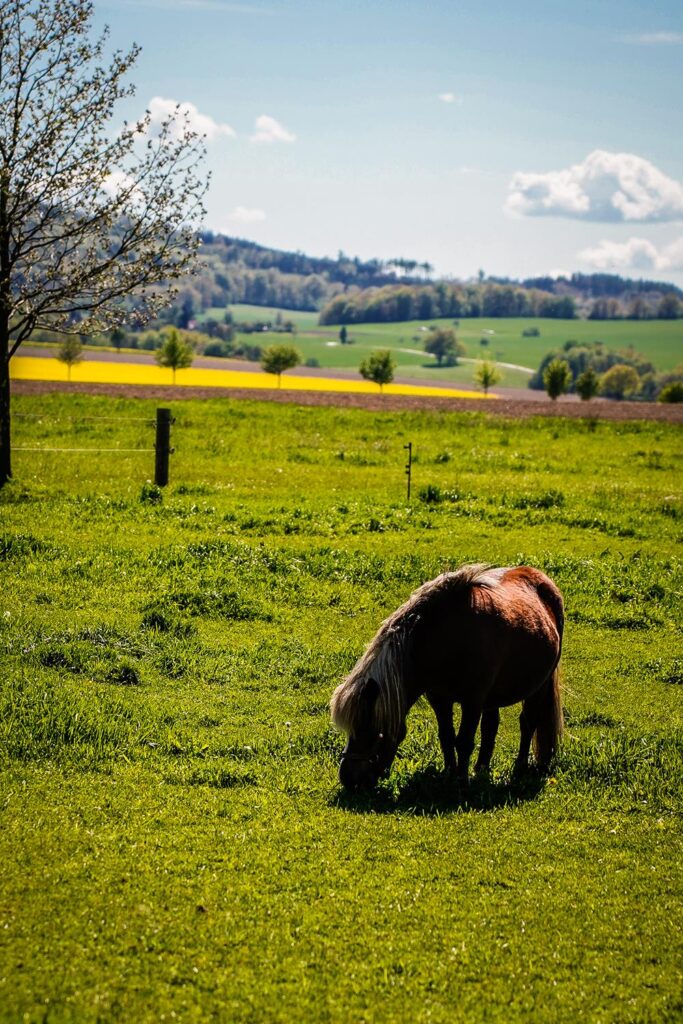
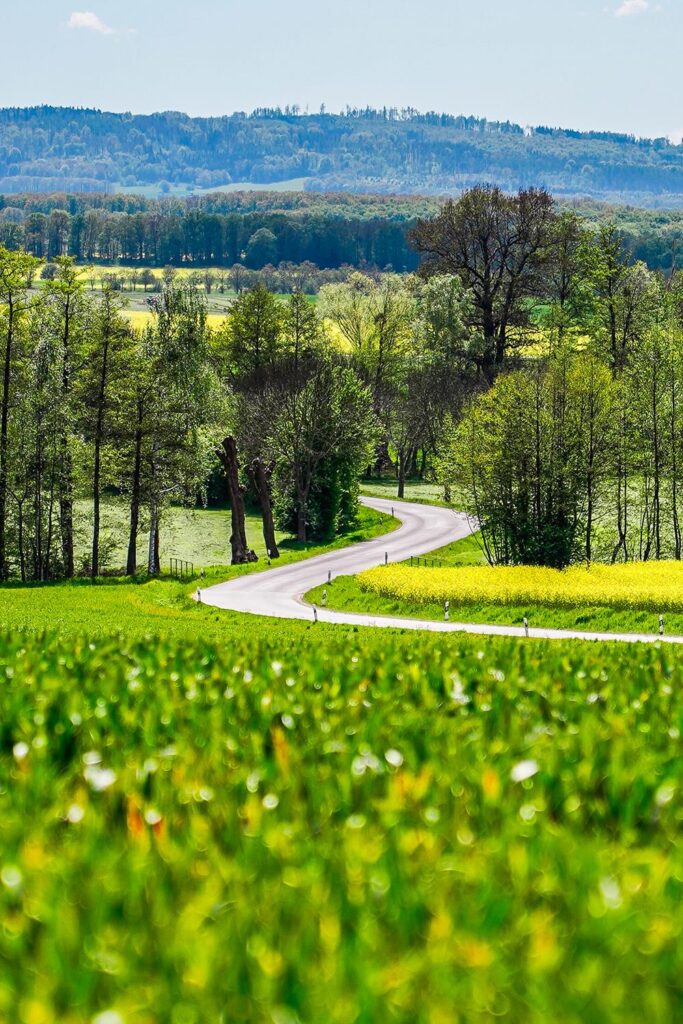
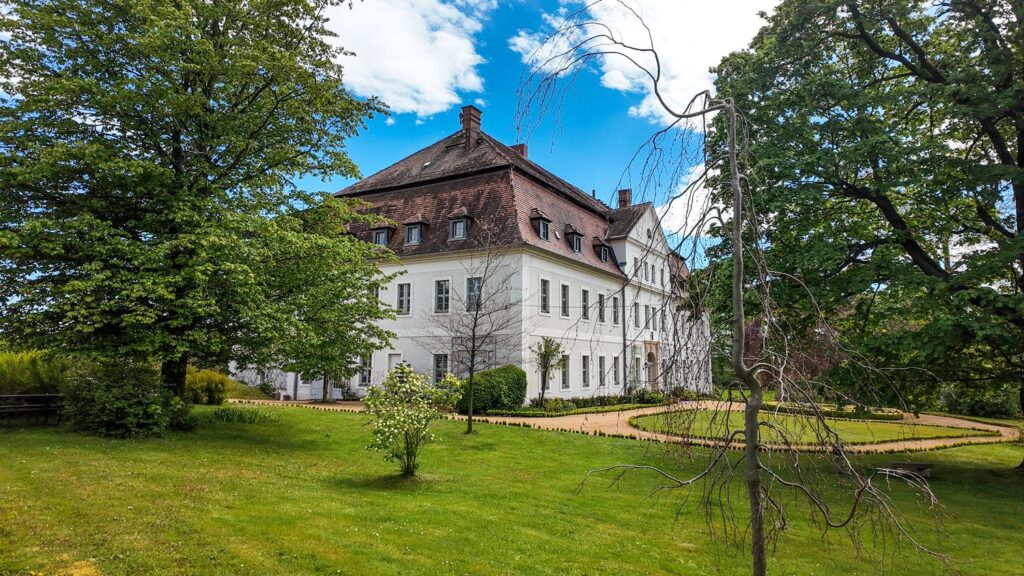
Upper Lusatian Attractions This is, of course, a selected part of the attractions; there are many more in the area. However, what’s important, you can do my travel plan in a week. That means a lot depends on the pace and interests, but in my opinion, a week will be optimal not to rush, but to have time to sit for a coffee or admire the views. I recommend it.
If you’re interested in traveling in Germany, check out my other posts:
- What to Do in Leipzig: A Guide to the Must-See Attractions
- Exploring Lübeck: A Gem of Medieval Architecture and Cultural Heritage
- Hildesheim: Fascinating Attractions to Explore
- Saxony-Anhalt: Must-See Attractions You Can’t Miss
- Things To Do In Quedlinburg – Tips for a Day Trip
- Wernigerode: Unveiling the Fairy Tale Beauty of Germany’s Hidden Gem!
This action is co-financed with tax funds based on the budget approved by the members of the Saxon State Parliament.
More information about the Upper Lusatia region on the website www.oberlausitz.com and www.tourismus-bautzen.de
